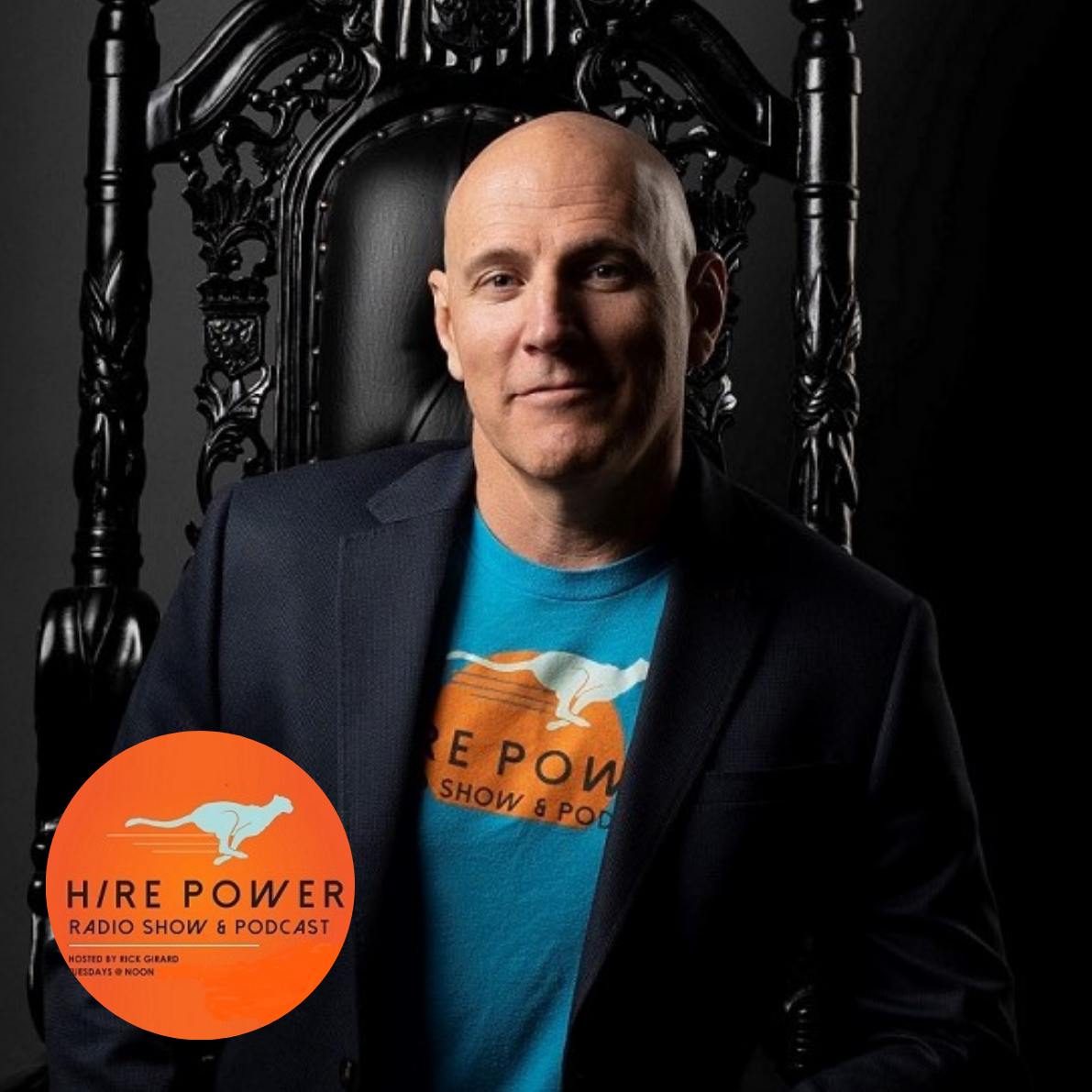
Welcome to the Hire Power Radio Show, where entrepreneurs and business leaders learn to hire with confidence and precision. Hosted by Rick Girard, this show is your go-to resource for avoiding costly hiring mistakes and securing the right talent to drive your company’s success. We dive deep into hiring challenges each week, featuring candid conversations with top-performing rebel entrepreneurs, disruptors, and industry experts. Join us every Tuesday at noon (PT) on LinkedIn Live for actionable insights, proven strategies, and the latest trends to give you the hiring edge. Subscribe now and join the movement to transform your hiring game. Do you have thoughts or questions? We’d love to hear from you!
Episodes
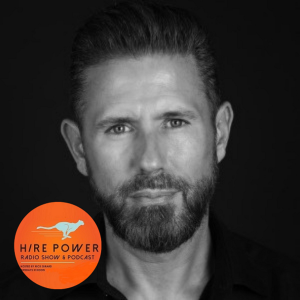
Thursday Jul 29, 2021
Thursday Jul 29, 2021
As Entrepreneurs, we are constantly striving to get in front of the challenges we have. However we often seem to be in a constant state of fighting fires.
So now we are at a precipice where technology tools can alleviate this pain but we must first invest the time in training & understand how to best position ourselves and our teams to innovate successfully.
Let’s start to think about our human resources differently in a mind shift away from our desires to the personal & professional development of our employees. Thinking bigger attracts A-players! This fuels innovation.
Our guest today: Patrick Schwerdtfeger, Business Futurist and Keynote Speaker
Patrick specializes in technology trends including big data, artificial intelligence, Fintech and blockchain. He’s the author of “Pandemic, Inc.: 8 Forces Driving Business Failure or Fortune in the Post-COVID-19 Economy” as well as five other books, and has lectured at numerous academic institutions including Purdue and Stanford Universities.
Patrick is also a regular speaker for Bloomberg TV, founder of Trend Mastery Inc., and host of the Strategic Business Insights video blog (with over 28,000 subscribers and six million views on YouTube). Patrick has spoken about business trends, technology and digital marketing at hundreds of conferences all around the world.
Today we discuss:
- How to think bigger to attract stronger talent
Challenge today?
- Companies are not adopting technology fast enough
- Companies always feel like they’re “behind” with respect to technology
- How can companies leverage HR to accelerate technology adoption?
- Jobs of the future: (1) communication skills & (2) creative problem solving
- Thinking about your human resources differently
- Stop thinking bottom up
- NEW: How can companies attract top talent
- NEW: Millennials are “lazy, apathetic, and entitled” but they CAN be inspired
- NEW: Inspire your employees, customers, and competitors (good source)
Why is this important to the company?
- Being innovative fuels growth
Rick’s Nuggets
- Define your company’s purpose & cause
- Utilize Talent from competitor - adjacent companies
- Present Innovative technologies
How do we solve the problem?
- #1: Identify staff who are excited to learn and use software more extensively
- #2: Leverage enterprise software and get more training for your staff
- #3: Understand that technology propagates SMB through enterprise software
- #4: Break down tasks into (1) manual & (2) cognitive
- #5: Break each category down into (1) manual & (2) cognitive
- #6: Soft repetitive tasks by their level of complexity
- #7: Understand that “Innovation = Budgeting Failure”
- #8: Protecting high-gross margin products to FUND innovation
- #9: FAIL as fast and as cheaply as possible (test new ideas cheaply)
- NEW: think bigger about your business
- NEW: not 10% bigger, but 10x bigger
Rick’s Nuggets
- Train your people - Have an active training program that promotes learning, innovation, new technologies - good for retention
- Elevate top-down thinking
Key Takeaways -Value:
- #1: EVERYONE thinks they’re behind.
- #2: think more strategically, and you’ll catch up quickly.
Guest Links:
Patrick's Book: Pandemic, Inc.: 8 Forces Driving Business Failure or Fortune in the Post-COVID-19 Economy (Amazon)
Patrick Schwerdtfeger: Patrick Schwerdtfeger
Company: Patrick Schwerdtfeger Facebook Twitter
This show is proudly sponsored by Criteria Crop
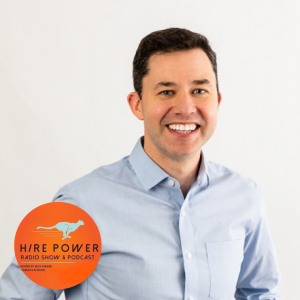
Thursday Jul 15, 2021
Thursday Jul 15, 2021
Listening is the most critical interview tool you have. Not listening to respond (which we all do) but listening to understand.
Think of the interview as an opportunity to gather evidence to support your decision and when you understand a person’s pain & desire first, you can accurately position your opportunity as the answer to their problems.
Why do you need to understand the person before you hire them? Isn’t it enough that you know that they have the skills that are needed?
Because not understanding the values of the individual is what ultimately results in bad hiring decisions.
Our guest today: Casey Welch, Co-Founder & CEO of Tallo.
A digital platform and app that connects 1.3 million+ students and professionals to opportunities offered by colleges, companies, and organizations. Since its inception, Tallo has pioneered early talent engagement, facilitating career discovery and guidance for a diverse talent pool.
Under Casey’s leadership, Tallo serves as a virtual ecosystem leveling the playing field for all students and job seekers, regardless of traditional geographic and economic barriers. Casey is a leading expert on Generation Z in higher education and the workforce, and his insights have been featured in Forbes, FastCompany, ZDNet, and SHRM.
Today we discuss:
- The importance of proper positioning when hiring
- How to build understanding into your interview process
Challenge today? (Reactive hiring and approach to talent)
- People want to find careers that are purposeful
- After more than a year of grinding stress, workers are increasingly looking to find new jobs. In fact, according to research by Monster, 95% of workers are thinking about finding a new job, and 92% would consider switching industries for a new position.
- Gen Z agrees with this overall sentiment. According to Tallo’s recent survey of over 1000+ Gen Z individuals, 69% of Gen Z said over the past year it's become more important to find a job that is personally fulfilling.
- Products that will help people, change peoples lives
- Gen Z wants a career that brings them purpose and meaning, not just a job. They also want to make a social impact with their career, not just work the 9-5. Tallo data found that one of the three most important factors for Gen Z when thinking about their future work environment includes making an impact socially and economically (47%)
- In order to attract members of Gen Z, employers need to show prospective new employees will bring a positive change from a social and economic standpoint. This is an opposite mindset from their predecessors Millennials, who focused more on company name recognition
- Finding the workforce that is going to stay
- The top three most important factors for Gen Z when thinking about their current or future work environment include:
- Having a fair and ethical boss (72%)
- The ability to be heard (61%)
- Making an impact socially and economically (47%)
- Hybrid work environments are key: 63% of Gen Z is interested in working in a hybrid setting, while 27% want to work in the office full time and 8% want to work remotely full time.
- The top three most important factors for Gen Z when thinking about their current or future work environment include:
- Pandemic changed people's views
- More than one out of every three Gen Zers reported in a Tallo survey that they are reconsidering their career choice due to certain industries being negatively impacted by the COVID-19 pandemic.
- Culture & environment are far more important
- The three biggest factors that motivate Gen Z to take a job include salary (78%) interest in work (70%) and work life balance (58%).
- Addressing social issues + diversity equity and inclusion in the workplace is vital. Tallo data found that Gen Z listed the following as the most important DEI initiatives they look for in an employer:
- Women in leadership (59%)
- Training and discussions (58%)
- People of color in leadership positions (53%)
Why is this important to the company?
- Understanding what the modern employees wants and needs are, and then meeting those needs is critical to improve retention and reduce turnover.
- People are leaving their companies faster than the employers can fill, which is why there’s a high demand for jobs but no supply of experienced candidates. In order to fill these positions, employers must begin a double-pronged approach of employee retention and employee outreach – and focus their efforts on Gen Z.
- When asked about future workplace settings, only 8% of Gen Z want to be fully remote. 63% want hybrid and 27% would want to be in the office full time
Rick’s Nuggets
- Understanding leads to truth
- Every person has a different set of values
- Evidence eliminates
- Assumptions
- Bias
How do we solve the problem? (Creating a proactive approach and system to hiring)
- Mindshift
- Away from transactional relationship (Two people can want to get married, doesn’t mean they want to get married to each other)
- Care more about experience and about people
- Using tools for measurement
- Purpose & Meaning - what they like and want to do
- Skills - What they CAN do
- A focus on reskilling, upskilling and learning & development (L&D) opportunities:
- Employers need to provide all their employees with new and innovative ways to reskill and upskill – especially when it comes to soft skills.
- 74% of Gen Z think soft skills (such as critical thinking, analysis, problem solving, leadership, and communication) are more critical for success in our current economy.
- Some different L&D opportunities employers can explore include:
- Technical (science, technology, engineering, software development, and design);
- Leadership (communication, management, and critical thinking);
- Learning new languages; and
- Agile (collaboration, user experience, experimentation, and continuous learning).
Rick’s Nuggets
- Mindset : who are you really?
- Blind conversations are the most fruitful & eliminate bias
- Interview questions that surface value alignment
- Behavioral Interview that is tied to values!
Key Takeaways -Value:
- Employers must place a heightened focus on recruiting the next generation of leaders into the workplace: Gen Z
- The most important factors to drives people to come work for you include considering a hybrid work environment, addressing and emphasizing the important of diversity, equity and inclusion in the workplace and providing a means for employees to reskill + upskill
- Employers must fully understand what today’s modern employee wants – from salary to benefits to work environment – and meet those expectations
Guest Links:
Casey Welch: LinkedIn
Company: Tallo Facebook Twitter Instagram
This show is proudly sponsored by Criteria Crop

Thursday Jul 08, 2021
The Right Formula for Proactive Recruiting with Eric Dahan of Open Influence
Thursday Jul 08, 2021
Thursday Jul 08, 2021
Do you have a target list of the people you desire to hire?
It is easy to plan the roles you need to hire but the “who” is what matters most. A very simple hack is to just create a spreadsheet and every time you hear of someone good, add them to your list.
Now here is the important part… reach out and seek to understand. Simply reaching out and listening to their desires is all it takes to attract a well positioned player for your company.
Our guest today: Eric Dahan, Co-Founder & CEO of Open Influence
A premiere influencer marketing company with clients that include Disney, Google, Amazon, Facebook, and Under Armour, among others. The company is also a leader in Machine Learning and Artificial Intelligence within the ad industry thanks to its predictive analytics tools and entire influencer taxonomy, which contains over 10B data points. Eric is a Forbes 30 Under 30 recipient and Inc. 30 Under 30 honoree.
Eric has hired over 100 people for Open Influence and has a strong proactive program in place.
Today we discuss:
- Why you should always be interviewing
- How to run a proactive hiring campaign
Challenge today? (Reactive hiring and approach to talent)
- Cascade risk of people getting burned out and demoralized
- Takes time to train new people
- An ounce of prevention
- Avoiding the “oh shit” moments
Why is this important to the company?
- From a p&l standpoint, building a more lucrative business
- Retaining the best and brightest that they have worked so hard to to build up
- Attracting, building, training and elevating the best people
Rick’s Nuggets
- People are harder than ever to attract
- Building a passive talent pipeline allows you to constantly raise productivity
How do we solve the problem? (Creating a proactive approach and system to hiring)
- Planning
- This is the structure
- Getting the team to buy in
- The why
- Accomplish more by delegating
- Create a strong feeder of young candidates
- In network referrals
- Inbound, through website
- Industry niche focused
- Building relationships with professors in college
- Elevate and create a management layer
- Empower managers to
- Giving a bit more time to go out and find people
- Budget for strong hires
- Role creation for strong talent
- Elevating from within
- Hired HR director to help with recruiting and building out better processes
-
- A lot of time saved with onboarding
- Point person for planning & vetting
Rick’s Nuggets
- Dedicate 1 hour a week to talent development (first 20)
- Adopt a policy of opportunistic relationship building
- ie: hackathons, hosting events
- Understand the person’s pain & desire
- Start interviewing 2 months prior the role becoming available
- Value alignment is key!
- Judge on values, not skills
Key Takeaways -Value:
- Think about the ideal structure and what is going to make you scale. What is the break point? How do you make sure you bring it to life?
- Think of hiring as something that you will always have to do
- To really scale, make hiring continuous
Guest Links:
Eric Dahan: LinkedIn
Company: Open Influence Facebook Twitter Instagram YouTube
This show is proudly sponsored by Criteria Crop

Thursday Jul 01, 2021
How Collaborative Negotiation Attracts Talent with Beerud Sheth of Gupshup
Thursday Jul 01, 2021
Thursday Jul 01, 2021
Knowing at least one attribute that is shared by everyone in the organization is critical to nail down before you start hiring. This one thing becomes the cornerstone of your corporate values which shapes the company culture, attracts the right people and fuels growth.
Ask yourself, what is the one trait that is critical to the organization? Write it down, start talking about it and encourage it to grow. Allow it to be the compass by which you will evaluate the right fit.
Our guest today: Beerud Sheth, Co-Founder & CEO of Gupshup
Gupshup is the global leader in cloud messaging and conversational experiences. He previously founded and led Elance (now Upwork, a publicly listed company), the pioneer of online freelancing and the gig economy.
Beerud has built world class organizations and hired hundreds of talented people throughout his career.
Today we discuss:
- Minimizing the difficulty in hiring the right people
- How to identify your one thing to enable you to make the right hiring decision
Challenge today in finding & hiring the strongest people?
- Putting the jigsaw puzzle together
- The right set of people
- Hyper growth
- don't rush into the hire
- Make due with what you have, be opportunistic
- Collaborative Negotiation
Why is this important to the company?
- Very jr, part time roles were able to demonstrate grit & hunger and have evolved to very senior roles in the organization
- People who get stuff done
Rick’s Nuggets
- It starts with leadership!
- What is your most crucial attribute
- Define it
- Live it
How do we solve the problem?
Find Highly flexible people
- Goal oriented
- Sense of humor; not take themselves too seriously
- Missionaries, not mercenaries
- How they negotiate is key
Right people, right seat
- Give broad opportunities
- *collaborative negotiation is key
- Constructive conflict resolution
- Teamwork is all about negotiation
Empower them within the role
- Expand the scope of the opportunity
- Personalities aside
- Flexibility, teamwork, focus on the big picture
Rick’s Nuggets
- Referral network
- Content
- Evaluate people for Value Alignment
- Do they live your value??
Key Takeaways -Value:
- Business requires flexibility
- Collaborative Negotiation enables flexible execution and innovation
- Flexible teams win
Guest Links:
Beerud Sheth: LinkedIn
Company: Gupshup Facebook Twitter
This show is proudly sponsored by Criteria Crop

Friday Jun 25, 2021
4 Steps to Hiring Full-time Offshore Talent with Eris Verne of Alfinder
Friday Jun 25, 2021
Friday Jun 25, 2021
Are you considering hiring a team of experts offshore?
We all know that this option can give you a lot more bang for your buck. But does it really? The communication challenges, cultural differences and time variations may prove too much to manage for some entrepreneurs.
It’s important to consider this as an option only when the organization has the tools & structure to support successful communication of expectations. When aligned with company values, these hires can bring the added diversity that is needed to fuel innovation.
Our guest today: Eris Verne, Founder of AIfinder.
Eris started programming at the age of 14. While in college he started an algorithm based company which solved the problem of internet filtering called APKN. The company was acquired two years later.
After the exit of APKN, Eris discovered a flaw within a multidisciplinary field which intersects marketing, data, and behavioral analysis. So he founded Alfinder to be the most flexible behavioral data analysis solution, enabling industry leaders to predict market behaviors and learn audiences. He currently leads a team of 11 talented offshore employees who have been extraordinary since day one.
Today we discuss:
- Why to hire offshore talent
- How to effectively acquire the right teams for your company
Challenge today?
- Big risk to hire local
- Costs
- Commitments, legal issues
- Locating people for technical roles very difficult
- Taking a big gamble
- Problems faced:
- Knowing what to do with the offshore team
- Cultural alignment
- Quality
- Need a technical person to manage
Why is this important to the company?
- Frees your time to hand off work
- Offshore are in their own habitat - only need one person here to project manage
- Must be a technical founder!
Rick’s Nuggets
- Communication is the biggest hurdle
- Contracting makes sense
How do we hire offshore talent effectively?
- First Determine what you need
- It’s best to find a technical person to assist you with this
- Do not hire individuals! Hire through an agency
- Identify an agency
- They might not be technical people themselves so make sure they understand your needs.
- Agencies usually have a way of tracking their candidates, ask as many questions as needed to understand the details of how the do so
- The agency you choose should be ok with you changing, adding and removing candidates from your team regularly
- Don’t fall into the trap of letting them handle your team and get your own project manager
- Interview & Hire
- Feel free to set up your interview as you would normally
- Understand candidates backgrounds and challenge them with technical questions
- Make sure there is NOT a language barrier or move on
- Do not spend days on hiring and going through 5 interviews with a candidate
- Hire Fast, Fire Faster!
- Set everything straight
- Try not to share internal news with them
- And don’t expect them to learn a new technology while working for you
- After you find fit candidates for your needs, try to work with them on a technical level only
- Monitor their everyday work
- Set the bar as you would normally
Key Takeaways -Value:
- If you’re not a technical founder make sure you to have a technical person on your team
- Focus on the people who benefit from your software/solution rather than the people who are making it
- Hire Fast, Fire Faster
Guest Links:
Eris Verne: LinkedIn
Company: Alfinder Facebook Instagram
This show is proudly sponsored by Criteria Crop
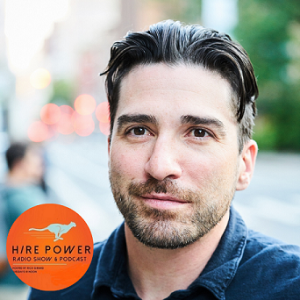
Thursday Jun 17, 2021
Thursday Jun 17, 2021
People do not want to go into the office on a daily basis anymore!
In fact, the last search we completed had an overwhelming number of people that would only be interested in a hybrid or fully remote work situation. Quality of life has become far more important to people than the paycheck.
We have all had to pivot in the past year but we really should embrace & capitalize on the opportunity that has been presented to us. That opportunity is the ability to raise the bar of talent within your company that is outside your geographical locale.
Our guest today: Nick Iovacchini, Co-Founder & CEO of Kettlespace.
Nick Iovacchini is a serial founder with a proven track record of building successful ventures across a wide range of industries. Companies founded by Nick have grossed $70MM+ in revenue, sold 10MM+ consumer products, and provided hospitality to 1MM+ patrons. Nick is currently a co-founder of KettleSpace, a company enabling smart hybrid work solutions with software, workspaces, and expertise. In his role as CEO at KettleSpace, Nick oversees product, operations, and growth.
Today we discuss:
- Why the hybrid model is here to stay
- How to run an effective hybrid hiring model
Challenge today?
- Gen Z- values freedom
- People enjoying the upside to working from home
- 40% of workers will quit if they have to go back
- Operationalize hybrid & gather the right data to know if it is working
Why is this important to the company?
- Value talent- talent concern
- Power dynamics between worker and boss have changed
- Worker is in a stronger position of negotiation
- Apple revolt-
- Global shakeup
Rick’s Nuggets
- Target the strongest people -nation wide
How do we solve the problem?
- Gather task force of people
- HR, c suite,
- Look at new paradigm
- Employee input
- Establish KPI’s, Objectives & Steps to take (# days in the office)
- Success Metrics -- Engagement & Productivity Measurements
- General “Direction” for Hybrid - 50/50 vs 3 days a week vs. self-select all remote, all in-office, hybrid
- Set timelines
- Plan for Change Management / Communications
- Operationalize
- Tooling
- Decisions / policies
- Implementation
- Data Collection /
- Monitor and iterate
Rick’s Nuggets
- Target hiring: cross industry/competitors
- Personal contact information
- Performance metrics for each role- 90, 180 days
- Run HireOS
Key Takeaways -Value:
- According to McKinsey 90% of companies plan to be hybrid, but nearly 70% don’t have a plan or the tooling yet to implement it -- need to move towards solutions
- The key is accepting the fact that this environment will be changing, need to adopt a test/learn approach -- plan for adaptation
- Whether you are early or late to the hybrid party, at the end of the day this is what the talent wants and over time the majority of the workforce will demand -- early adopters will have advantages to retaining and attracting top talent
Links
Nick Iovacchini: LinkedIn
Company: Kettlespace Facebook Instagram Twitter YouTube
This show is proudly sponsored by Criteria Crop
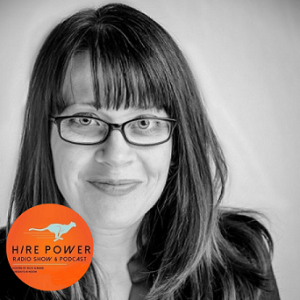
Thursday Jun 10, 2021
Thursday Jun 10, 2021
You don’t need to see 50 or even 10 candidates to make a hire. You only need to see 1.
Why do we feel like we need to see a lot of people to “compare & contrast” before making a decision? Because we have been conditioned to window shop to ensure we are getting the best “deal”. But this is a transactional mindset which causes us to hire too fast with zero evidence to support the decision. Resulting in bad hires!
Let’s change your perspective...
Start by flipping your funnel. Focus on the channels that produce the strongest hiring results. Referral Network, Warm Recruits, and then supplement with applicants.
Relationships, not money, are what drive people in today’s hiring landscape.
Our guest today: Kate DeWald, Founder & CEO of OnCue.
Kate DeWald is CEO and founder of Oncue, the leading software and booking service for the moving industry. Launched in 2018, Oncue helps moving companies increase their revenue by as much as 400%, year over year, by automating many of their manual processes and enabling them to devote more time towards business growth and longevity. Prior to leading Oncue, Kate served in go-to-market roles to drive growth at industry-leading SaaS companies, including SuccessFactors and ServiceMax.
Today we discuss:
- Why hiring is a long term play
- How to gain access to high quality people
Challenge today?
- Filling the top of the funnel with high quality people
- Leadership roles
- Funnel: either too many (unqualified) or too few
- Making sure the candidate experience is stellar
Why is this important to the company?
- Time wasting
- Want to find the people that are going to be best in the business
- Find the people that are aligned on mission, vision and values
Rick’s Nuggets
- Reactive hiring results in “oh shit” hires
How do we solve the problem?
- Funnel: linkedin recruiting, cold outreach, recruiter
- Hire expert/subject matter expertise recruiting
- Write content: be authentic and write about what it’s truly like to work at your company
- Unbias interview process- doesn’t matter where the candidate comes from
- Training leaders
- Reviewing questions prior to the interview
- Play the long game - interview and connect with people before you have the roles available, help out others where you can, it’s about creating long lasting relationships with people
Rick’s Nuggets
- Referrals first: “Who have you worked with that was a strong performer in the organization?”
- Recruits: cross industry performers, competitors-
Key Takeaways -Value:
- Spend more time than you think you need on recruiting
- Be authentic in your hiring process- if you’re a startup, own it- being transparent with the candidate about what the role is really will set them up for success
- Think about Key ways you can add value - how can you add value to your candidates in the process? Make sure they have a great experience regardless of the outcome
Guest Links:
Kate DeWald: LinkedIn
Company: OnCue Facebook Twitter
This show is proudly sponsored by Criteria Crop

Thursday Jun 03, 2021
Your Strongest Hire is Gone in 8 Seconds with Henna Pryor of Pryority Group
Thursday Jun 03, 2021
Thursday Jun 03, 2021
You’re hiring and just are not seeing the quality flow of people responding to your job ads. A bit frustrated, you decide to launch an email/LinkedIn campaign targeting people from your competitors. You identify the people you want to talk to and start sending messages. Hopeful that you’ll draw in the strongest talent.
But the response is underwhelming at best. Why?
Because no one cares about your company, your job or you until you can demonstrate the value of “what’s in it for me?”. The selfish way you message is the #1 reason you fail to gain a positive response. Start with a person’s pain first, then you'll gain their attention.
Our guest today: Henna Pryor, President & Executive Coach for Pryority Group
After an explosive 14-year recruitment career working with top performers, growing managers, and C-suite leaders, Henna founded Pryority Group to realize a vision that access to coaching and development is the most important asset to any individual’s continued growth.
Henna prides herself on an "empathetic but no-nonsense" approach and has been recognized quickly as a secret weapon of companies ranging from fast-growing startups to Fortune 500. She has a dual specialty in working with high-achieving women and measurably improving the performance of sales teams and growing start-up businesses through her in-demand sales messaging training programs and strategic coaching.
Today we discuss:
- Why no one cares about your messaging today
- How to structure your digital communications to gain a positive response
Challenge today?
Reaching out to candidates digitally in a noisy marketplace - getting their attention and keeping it.
Problem:
- Peoples attention span is about 8 seconds in digital communication (goldfish)
- Initial outreach is usually operating from middle school English class writing techniques
- Subject line kills you (great opportunity)
- The spotlight is in the wrong spot. People start by talking about themselves right out of the gate. People don’t want to hear about you right away. They want to be the hero of their sales message first.
- People are motivated by
- Love
- Hate
- Fear of
- Vanity
- Pride
- Longing for
Why is this important to the company?
- Even in digital communication, people buy on emotion.
- People get 121 emails a day- most of which are deleted or ignored
- Most leaders have not been taught sales writing
Rick’s Nuggets
- Pain, desire, impact
How do we solve the problem?
- Subject Line
- Must induce curiosity
- Ie: You wouldn’t believe how we do this,
- Confidential mysterious confession- top open
- “That was a huge fail”
- What's something special? What’s something you want to get away from?
- The Content
- You Perspective (“I get you, I understand where you’re coming from, I relate”
- Here’s why it might be worth chatting with me for a few minutes (features + benefits, ideally at least 3)
- Call to action
- Very clear
- Low pressure, low commitment
Rick’s Nuggets
- Strike a nerve by identifying their pain
- Be specific (growth, management, work content)
- Desired outcome by alleviating the pain
- Performance Metrics (Impact they will make)
- How’s my telepathy?
Opener
- You have been eagerly anticipating my email, but I just received your telepathic message so I apologize for taking so long to get back to you ;-).
Acknowledge the Pain
- I understand you are pretty good at your job but your talents in XXXX (personalize) may be a bit underappreciated (or underutilized, under-challenged, over-managed) in your current role.
Key Takeaways -Value:
- Attention is a currency. You might have the best opportunity with the biggest runway, but none of it matters if you don’t have a rock solid digital communication strategy to catch the attention of the right people to engage the conversation further.
- Your value proposition alone isn’t enough to attract a good candidate in this marketplace. You need to express in your outreach that you understand THEM, and then walk them through the benefits that will make your message compelling enough to want to continue the conversation.
- Using the framework shared will give you a much more compelling message to attract the candidate and give you a much better chance of starting conversations with the top passive talent as well, not just the active talent.
Guest Links:
Henna Pryor: LinkedIn www.linkedin.com/in/hennapryor
Company: Pryority Group Facebook Instagram
This show is proudly sponsored by Criteria Crop

Thursday May 27, 2021
How Your Book Can Attract Talent with Alicia Dunams of Bestseller in a Weekend
Thursday May 27, 2021
Thursday May 27, 2021
With everyone struggling to hire, companies are looking for a competitive edge in being able to attract talented people. But the answer is not compensation & benefits. Contrary to what most people are preaching right now.
What draws people to your company is NOT the transaction. It is the substance behind what is in it for me!
Today we are discussing how your book can have a surprising effect in drawing talented people to your company by simply allowing people to understand who you are.
Our guest today: Alicia Dunams, Founder & CEO of Bestseller in a Weekend.
Alicia has helped over 2000 people become bestselling authors through her Bestseller in a Weekend® course and professional ghostwriting author services and coaching company.
Additionally, as a leadership trainer, executive coach and certified peacemaker/mediator who has worked with clients including CBS, Gap, GEICO, and Capital One, Alicia uses the foundation of healthy conversations and storytelling as the bridge to overcome conflict in the workplace and beyond.
Alicia is an expert at bringing a book to life and elevating personal & professional brand!
Which makes Alicia a perfect expert for today’s topic.
Today we discuss:
- Why a book may be the competitive edge
- How to create a book to elevate your professional brand
Challenge today?
- Can't attract the right people
- People don't want to go back to the grind
- Want flexibility in being able to work from home
- Competing from a lifestyle perspective
- Companies are competing in the same pool
- Not attracting the passive people
Why is this important to the company?
- Publicity
- Clear company story
- Insight into who you might be working for
- Shows company values
- Branding
- Omnipresence
- Sales/recruiting channel (24x7)
People who resonate with the message of your book will be drawn to the company
Rick’s Nuggets
- Powerful insight into who I will be working for
- How do one write a book while building a company?
- Determine what do you want to accomplish with book
- Outlining the target audience
- Their pain point and providing solution
- Positioning it for recruiting attraction
- Examples of culture and stories of the people who work for you
- Hire a Ghostwriter
- Find someone who resonates with you - someone who captures your voice, finding your voice
- Contact a service, like The Book Funnel ,or Authors Unite, where a book coach can pair you with a ghostwriter, and handles all the project management and author services
- 6-12 months
- Traditional Publishing Route
- Contact me
- Timeframe 18months
- Connect with a Book Proposal Writer (describe what is a book proposal)
- Contact Agent - they also have a list of book proposal writers
- Your book will be Shopped around
- Book Marketing - make your book a bestseller
Key Takeaways -Value:
- Write a book on workplace culture to attract the right people.
- This book becomes a playbook and operating procedure for your company.
- This also could be a requisite read for new hires/interviewees.
Guest Links:
Alicia Dunams: LinkedIn Website Facebook Instagram
Company: Best Seller In a Weekend YouTube
This show is proudly sponsored by Criteria Crop
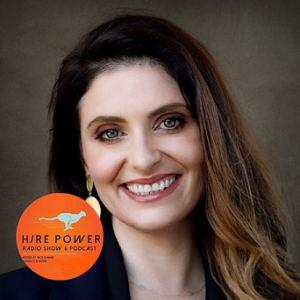
Friday May 21, 2021
Diversity Hiring Fire Drills with Venesa Klein of Calibre One
Friday May 21, 2021
Friday May 21, 2021
It is no secret that diversity sparks innovation and fuels business growth.
But diversity for the sake of image or social pressure is dangerous. It needs to truly be embedded into the fabric of the corporate values in how people interact. It is not just checking off a box to satisfy outsiders.
This is most dangerous when someone is hired simply for their gender or race without any consideration of what the individual is positioned to contribute. Values are misaligned, expectations miscommunicated and voila …. Let the nightmare begin.
Costly mistakes that result in wrongful terminations, and hostile work environment lawsuits.
Our guest today: Venesa Klein, Executive Recruiter & Partner for Calibre One.
Since 2007, Venesa has helped some of the world's most successful companies build out the critical leadership teams that drive their success.
As Partner at Calibre One, Venesa founded its Purpose-Driven Practice, which focuses on placing executives in growing organizations seeking to create innovation with meaningful impact. Her empathy forward personality along with her strategic thinking has enabled her to successfully build diversity programs for her clients.
Today we discuss:
- Why diversity may not be right for your company
- How to correctly implement a diversity program
Challenge today? Having a real diversity strategy
- Implement a long term strategy that develops people into leaders
- Diversity in leadership to fill a role - check off the box
- Oh Shit, we need to hire a woman because we are an all male leadership team
- the structure to give opportunity to diversity
- Vanity hire
Why is this important to the company?
- Real change and a more diverse workforce equals growth & innovation
- Companies
- The reality is that a woman
- Diversity of perspective: Will the person really be valued
Rick’s Nuggets
- Hiring for core values alignment eliminates bias, promotes diversity
- Just filling a seat for diversity sake, dangerous
- Value aligned
- Empowered to thrive
How do we solve the problem?
- Bottom up approach
- Add people at the most jr level first
- Development plan
- Way of identifying people who are doing well and offering opportunity to continuously grow
- Promote into leadership
- Incentivizing organization to develop those around them
- Leadership accountability
- When you have to go out to search
- Leadership team in agreement
- Think through the obstacles in recruiting within the criteria
- Ask Why?
- Needs to be a level of honesty -that is not happening
Rick’s Nuggets
- Build your interview process to eliminate bias first
- Value alignment first
- Values come in every flavor of person
- Positioning before Pitch
- Understand the person’s desires
- Path to success
- Heal their career wounds with your opportunity
- Value alignment first
Key Takeaways -Value:
- Bottom up approach
- Strategy around developing diversity in the organization
- Looking through the lens of diversity
Guest Links:
Venesa Klein: LinkedIn Twitter
Company: Calibre One Facebook Twitter
This show is proudly sponsored by Criteria Crop
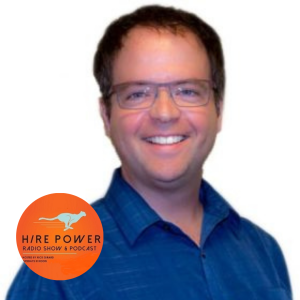
Thursday May 13, 2021
Bias in Interviewing Starts with the Resume with Dr. Michael Neal of Build My Team
Thursday May 13, 2021
Thursday May 13, 2021
What if you completely eliminated the resume from your entire hiring process?
Now you might be thinking, “how is that even possible”? Well, lets’ divulge a few truths about the resume. First, all resumes lie. Not only in what is written but more importantly, what is not. Really the most valuable information on a resume is the contact information and the white space. And the white space is where the truth is found.
Today we discuss how to effectively circumvent the resume to uncover the strongest talent while minimizing your time investment in sifting through piles of resumes.
Our guest today: Dr Michael Neal, Founder & CEO of Build My Team
Dr. Michael Neal is an Eye Doctor in private practice and the Founder of Build My Team. After years of struggling with bad hires, he invented a scientific assessment system to predictably discover diamonds in the rough - all without looking at resumes.
Dr. Neal and Build My Team erase all the guesswork with their scientific hiring process. They remove those who can’t do the job using their unique combination of scientific assessments for mindset, learning speed, motivation, strengths and talents. This saves business owners valuable time and helps eliminate high turnover.
Today we discuss:
- Why we need to kill the resume
- How to effectively hire without a resume
What are the challenges with the resume?
- At the end of the day, leaders just want to know who to hire
- Resumes get in the way every step of the process until the end
- A resume does not tell you anything useful
- Address is the most useful thing (tells commute time)
- Mostly made up- inaccurate information
Why is this important to the company?
- Resumes lead people down the wrong path
- Fictional failure file
- Bias
- Does not tell you who the person is
- Inertia - lead into the funnel
- Replace the resume with a scientific assessment
- 97% accurate
Rick’s Nuggets
- All Resumes LIE
- Hiring for Skills is a recipe for disaster
- This includes Vanity Hires
- A Call to Action is a powerful screening mechanism
- Added to the job description
- Provides insight into the person
How do we solve the problem?
- Be open to a better way
- If the current method is working,
- Enjoy the misery of being on the hiring hamster wheel
- Ready for better results
- Pain: time, emotional,
- Use assessments
- Build your person and identify the superstars
- Reject concept of experience
- Eliminate the con-people and manipulators
- Reverse engineer what the right person looks like
- Being categorically honest
- Accepting the truth- hire people around the leaders
- Identify a specific mindset
- Eliminate entitlement
- Interview
- Do not bring the resume into the interview
Rick’s Nuggets
- Invest the time cultivating Referrals first
- Targeted recruiting
- Job postings
- Discovery Call!
- Determines if the person has the correct positioning first
- Understanding Pain, Desire & Impact
Key Takeaways -Value:
- The stress you are under as a business owner with hiring is totally avoidable
- Replace mediocre team members with superstars
- An 80% staff replacement resulted in an 82% profit increase
Guest Links:
Michael Neal: LinkedIn
Company: Build My Team Facebook
This show is proudly sponsored by Criteria Crop
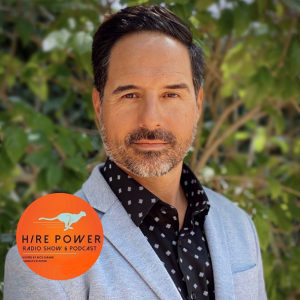
Thursday May 06, 2021
Thursday May 06, 2021
Assumptions are the #1 reason we fail in our expectations when hiring and raising capital.
Assumptions are drawn when we don’t invest the time to listen to all parties. Asking deeper questions to gather data to support an accurate decision is crucial. What is not uncovered is the reason we make bad hires. Because we inject our own assumptions, needs & bias where the evidence should be.
This especially holds true in your hiring process when our needs and desires cloud what is most important, the truth.
Our guest today: Brian Franco, Founder & Managing Partner of Meritage Partners.
Brian strives for excellence and fairness in deal structure and has a deeply intuitive understanding of the importance of company’s compatibility. He has represented and completed deals with an extremely diverse set of small and mid-sized businesses (SMB's), private equity groups and public companies in a number of industries and has significant experience working with companies in: architecture & engineering, healthcare, manufacturing, logistics, wellness, A.I., software and technology, and professional services.
Brian is an expert in aligning expectations in the M&A process.
Today we discuss:
- Managing Expectations with Market Conditions and Expectations when Fundraising & Hiring
- 3 step process to achieving expectation alignment
Challenge today?
- Capital raisers need to secure time to develop and bring their vision to market. In business as in life, Time is afforded by “capital” ILLUSTRATION: An airplane needs enough runway, a powerful engine or engines , and fuel to develop speed/momentum to get airborne. One without the other will result in catastrophic results
EXAMPLE: Amazon did not expect to make a profit for four to five years
QUESTION: Will you expect Capital Providers to wait months or years to return a profit?
- Does the investment opportunity meet the investors expectations?
- Time requirement
- Return on Investment
- Balanced Risk & Reward
- Is their alignment among the founders and the investors?
- Cultural alignment
- Is the founder/team coachable?
- Is the founder a “rebel” or a “cowboy/cowgirl”?
- Cultural alignment
- Is there TRUST, Is there a Perception of risk when it comes to the topics of:
- Operational Control
- Financial Control
- Investing in the PERSON or TEAM to execute the vision or the business plan
Note: Visionaries aren’t always the best integrators
STORY: Some of us are familiar with the story about Steve Jobs leaving Apple in 1985 for 12 years and then returning in 1997
- To manage you must first understand
- LISTENING
Why is this important to the company?
- Understanding alignment empowers us and allows us to understand how to meet expectations and then meeting those expectations leads to SUCCESS
- Qualified leadership team: is their personal goodwill or collateral in past successes?
- Relevant experience in leadership
Rick’s Nuggets
- Assume nothing- eliminate your needs, desires & bias
- Listening is the only way to understand
- Understanding is the key to truth
- Truth is the springboard to success
How do we solve the problem of managing expectations?
It is as simple as “Listening” and “Educating” ourselves so that we align and meet expectations of Capital Raisers and Capital Providers.
Identify what is Achievable
- Listening
Education
- Educating clients on what the ‘market’ is likely to offer them
- Aligning expectations to market practices or offerings (reality)
Plan & Equip
- Identify relevant investors
- Develop Pitch Deck and Memorandum to articulate a consistent message
- Experience and ability to Assembling the team and identifying strengths and weaknesses (don’t put the strongest person in any position simply because they are “strong” align their strengths with the organization because they are qualified and capable)
Rick’s Nuggets
- Understand the person the business needs
- Target:
- Research, network & connect with 5-10 potential candidates
- Execute
- Have conversations to determine positioning alignment
Key Takeaways -Value:
- Don’t get in the way of your vision (don’t be too rigid)
- Put an allstar team together
- Be coachable
Guest Links:
Brian Franco: LinkedIn Twitter
Company: Meritage Partners
This show is proudly sponsored by Criteria Crop
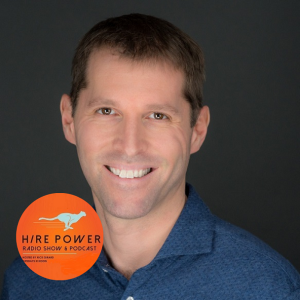
Thursday Apr 29, 2021
Thursday Apr 29, 2021
“But I have managed to hire two rockstars without having any formalized hiring structure” Said my friend Anthony. To which I quickly replied back “I’d rather be lucky than good”!
It is great to have a few “superstars” in your organization but it is outstanding to have an organization built entirely of well positioned, highly productive people, A-players.
Having a system for hiring is the only way to make the leap from average to extraordinary.
Our guest today: Robert Glazer, Founder & CEO of Acceleration Partners.
A global partner marketing agency, and the co-founder and Chairman of BrandCycle. A serial entrepreneur, he has a passion for helping individuals and organizations build their capacity to Elevate.
Robert was twice named to Glassdoor’s list of Top Small & Medium Companies CEO's (#2) and was selected as a Top 22 Conscious Business Leaders of 2019 by Conscious Company.
He speaks to companies and organizations around the world on topics related to business growth, culture, capacity-building and performance.
Today we discuss:
- Why systems, especially in hiring, to win!
- Robert’s process for hiring
Why are business leaders reluctant to follow a hiring system?
- Moving from a superstar hiring culture to a systematic process
- Getting everyone to do work up front
- Agreeing on what success looks like in the role
- Clarity in the scorecard
- Everyone to follow the process
- Being thorough to meet objectives
Why is this important to the company?
- Process pushes the responsibility of building great teams to the teams
- Scalable in removing leadership from the process quickly
- Scientific process and repeatable
Rick’s Nuggets
- Process & systems win
- “I’m too busy and don't have time to sit down and develop a process” - You
- Hiring process needs to be driven by leadership
- Hiring the strongest people, needs to be your strongest talent
How do we solve the problem?
- Collect process from other firms
- Layout - read Who
- Developing the playbook as a team
- Eliminating the bias & urgency
- Clear on qualities & outcomes
- Making everything behavioral based
- Training the playbook
- Train & certify on the process
- No interviewing unless you are and expert on the process itself
- Evaluate interviews
- Following the process
- Look at the data and scorecards, not gut
- Improving the playbook based on mistakes
- Debriefed on mid hires and find the holes in the system
- Get uncomfortable and figure it out now
Rick’s Nuggets
- Read Healing Career Wounds (Available May 20 - Preorder on Amazon)
- HireOS interview process -
- Role playing - best training!
- Scorecard = performance metrics - measurable / timeline
Key Takeaways -Value:
- Your current hiring process is probably no better than 50/50
- Based on individuals not a repeatable process
- A good process also really helps with remote hiring
- This is the #1 way to improve your culture
Links
LinkedIn:https://www.linkedin.com/in/glazer/
Websites:https://www.accelerationpartners.com/
Facebook: https://www.facebook.com/AccelerationPartners/
Twitter: https://twitter.com/accelerationpar
Instagram: https://www.instagram.com/accelerationpar/
YouTube: https://www.youtube.com/c/Accelerationpartners/featured
This show is proudly sponsored by Criteria Crop: https://www.criteriacorp.com/

Thursday Apr 22, 2021
Thursday Apr 22, 2021
It is very possible to share the same core values, yet differ in our religious or political views. This, we must understand when hiring new people.
Now you might be thinking something like “we have a really harmonious team and we don't want someone who will be bringing their strong political, religious or social agenda”. Then build the practice into your corporate values and let it blossom throughout the company.
After all, we are all servants to the “business”. And what is good for the business is innovation, diversity and growth. All of which are fueled by proper value alignment.
Our guest today: Bianca Lager, President of Social Intelligence Corp.
By driving the vision for Social Intelligence to provide productive, ethical and innovative solutions, she has spent her time working closely with Fortune 500 companies and non-profits alike to create safe and discrimination-free workplaces.
Bianca obtained an MBA from Pepperdine University with a concentration in Dispute Resolution and is a LinkedIn Learning Instructor. She is an expert in consumer reporting, focused on online risk for human resources.
Today we discuss:
- Valid reasons not to hire based on a person’s social profile
- How to properly use a social media background check to limit your company liability
What are the challenges with conducting a social media background check
- Violating privacy rights by doing it yourself
- Fed and state laws regarding politics in the workplace
- Whose standards are you using
- Is it related to business outcomes
- Is it fair to the person or the company
- Context is key
Why is this important to the company?
- Disqualification based on personal views does not lead to better business outcomes and could be discriminatory
- Culture fit -
- Diverse teams
- Or single mindset
- Business suffers
- Code of conduct standards
- Avoid someone who is disruptive to the business
- Limits the success of the company
- Who are we or What are we not?
- What is hate speech - how do we define and document that?
Rick’s Nuggets
- Difference in opinion among people who can communicate (agree to disagree) produce magical results
- unintended consequences
How do we implement a proper social media check? Do NOW!
- Review laws in your jurisdiction/jurisdiction of your employees
- Create a policy
- Risk - what is actionable
- Definition of what is acceptable code of conduct
- Stay away from protected class information
- Age, race, sex, religion, political affiliation
- 3rd party solution - defines content and behavior appropriately and consistently
- Violence:
- Intolerance:
- Criminal activity (drugs / stealing):
- Sexually explicit:
- Well documented and legally vetted business related behavior
- Fbi, Anti-Def, SPLC
- Actionable
- Legally defensible position
Rick’s Nuggets
- Preparation is key for everyone that you invite into your organization.
-
- Let your Values policy be known to everyone
- Crystal clarity from the minute they are engaged in the interview process
- Hire for value alignment first
Key Takeaways -Value:
- Formalize your social media screening approach
- Create a simple, 2-3 sentence social media policy based on a basic code of conduct
- Document and stay consistent (Documentation + consistency + policy = Actionable)
Links:
SI Podcast Offer - receive a free sample report along with discounted pricing offer
LinkedIn: https://www.linkedin.com/in/biancacalhounlager/
Websites: https://www.socialintel.com/
Facebook: https://www.facebook.com/socialintelligencecorp/
Twitter: https://twitter.com/socialintelco
Twitter: https://twitter.com/BiancaLager
Instagram: https://www.instagram.com/socialintelco/
This show is proudly sponsored by Criteria Crop: https://www.criteriacorp.com/
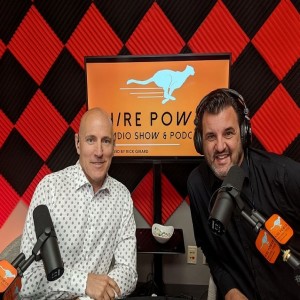
Thursday Apr 15, 2021
Thursday Apr 15, 2021
It’s no secret that I feel that employer branding is bullshit. Mostly because it is focused on perks and selling a “utopian” environment that is not what the company really is at all.
Messaging is focused on being the greatest place to work. But we all know that if you are a small to mid sized business, you are at best, a “hot mess”.
Clarity in who you REALLY are as an organization is the one thing that will propel your business forward and attract the strongest people to your company.
Our guest today: Eric Morley, Co-Founder & COO for Blue C Advertising
Eric has been helping companies across both B2B and B2C segments create brand strategies, campaign development, strategic design, content creation, and digital marketing strategies with a goal of outperforming the competition.
Eric and the Blue C team have been honored to work with some truly innovative and impactful brands that keep them constantly pushing and evolving their exclusive BrandPWR Platform.
Today we discuss:
- The truth about what branding is
- The elements for a true branding initiative
According to Wikipedia: Employer brand describes an employer's reputation as a place to work, and their employee value proposition
- EVP-a set of associations and offerings provided by an organization in return for the skills, capabilities and experiences an employee brings to the organization
Challenge today?
- Not having your messaging down
- Retooling messaging for a covid friendly world
- The world has changed in the last year
- Equally important to communicate to your customers as well has your future employees
Why is this important to the company?
- A players have seen it all before and can smell a skunk a mile away
- Laser focused messaging creates massive clarity
- Sales side, it affects revenue
- Employees- will view you as the same as…. Just getting by
Rick’s Nuggets
- Branding is not perks, puffing your chest (ego) or the product
- Today’s employer branding focus on transactional components
- Not about “what’s in it for me”
How do we solve the problem?
A 360 degree process- brand clarity
- Discovery
- Pull everything apart
- Question
- Verbal Messaging
-12 point process
- Vision
- Mission
- Positioning
- Brand pillars
- Brand promise
- Values
- Brand personality
- Voice & tone
- Mantra
- Tagline
- Visual Messaging- Recognition
- Website, social media, external marketing, inbound marketing
- Transcend from written to visual
Rick’s Nuggets
Pain
- Why
- Desire (what’s in it for you)
- Problems to be solved
- Performance metrics
Impact
- How you grow
Key Takeaways -Value:
- Strategy first - roadmap to the promise land
- Create laser focused messaging
- Massive clarity in the minds of your employees, future employees
Links
LinkedIn: https://www.linkedin.com/in/ericmorleybluec/
Websites: https://bluecusa.com/
Facebook: https://www.facebook.com/BlueCAdvertising/
Instagram: https://www.instagram.com/blue_c_usa/
This show is proudly sponsored by Criteria Crop: https://www.criteriacorp.com/
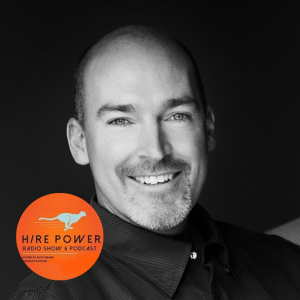
Thursday Apr 08, 2021
Are You Really an Entrepreneur? With Gino Wickman of EOS & Traction
Thursday Apr 08, 2021
Thursday Apr 08, 2021
As Leaders, we spend a lot of time wondering if we have the right person in the right seat. But how often do we question if we are the right person in the seat?
Entrepreneurs have a special challenge, in that, some of us don’t choose to be entrepreneurs, it is just who we are. But what if you are really an entrepreneur who is in a J O B… or not an entrepreneur at all but have been forced into that role due to life circumstances.
Today we discuss the core of what makes a business successful, the entrepreneur and how to recognize if you are the right person in the right seat.
Our guest today: Gino Wickman, Founder of EOS Worldwide, Author of Traction & Creator of Entrepreneurial Leap.
An entrepreneur since the age of 21, Gino has had an obsession for learning what makes businesses and entrepreneurs thrive.
Gino set out to help entrepreneurs and leaders get what they want from their businesses. Based on his years of real-world experience, he created the Entrepreneurial Operating System (EOS), a practical method for helping companies achieve greatness.
His new mission, Entrepreneurial Leap, is to find all of the entrepreneurs-in-the-making, at any age, wherever they are—to help them realize their purpose and live the life they were born to live.
Today we discuss:
- How to discover if you are really an entrepreneur
- The steps to take to launch your entrepreneurial journey
Challenge today in people being in the wrong seat?
- Are Your eyes open
- Did you make the right decision to become an entrepreneur
- Forced entrepreneurs - won't be the next Elon Musk
- Hype around being an entrepreneur
- Not everyone can be
- Career choice for 4% of the world
Why is this important to the person?
- Clarity, certainty, peace of mind, self confidence
Rick’s Nuggets
- Too often the person leading the company is just “running the business”
How do we discover your true entrepreneurial nature?
- Confirm
- Take the assessment
- Know when you on the entrepreneurial range
- Know whether you are or aren't
- Not is not a death sentence
- Glimpse
- What you are built for
- The type of business is right for you
- Day in a life- heaven & hell
- Perfect business for you (my bizmatch)
- Path
- Showing guide post to avoid ½ the mistakes they are going to make and greatly increase the likelihood of success
- Mentor
- Discipline
- Stages of building the company
Key Takeaways -Value:
- 1,2,3 roadmap-
- Assessment - https://e-leap.com/assessment/4
- MyBiz match, vision clarifier
Links:
LinkedIn: https://www.linkedin.com/in/ginowickman/
Websites: https://e-leap.com/
Facebook: https://www.facebook.com/readLEAP/
Instagram: https://www.instagram.com/readleap/
YouTube: https://www.youtube.com/channel/UCg1fRlytBObtuIIAa46B_cg
Entrepreneurial Leap: Do You Have What It Takes to Become an Entrepreneur? Available for purchase through all major retailers: Order on Amazon
This show is proudly sponsored by Criteria Crop: https://www.criteriacorp.com/
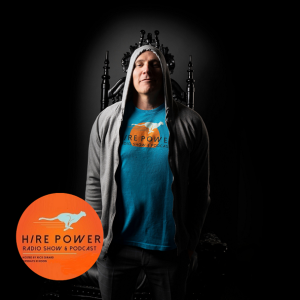
Thursday Apr 01, 2021
Thursday Apr 01, 2021
We can all agree that the only way to 10 or 100x your company is to hire the strongest people. So, what are the strongest people?
The strongest person for your company is a person who aligns with your values first. They understand the mission and they have a strong desire to impact the business because it benefits them first.
Understanding the person across the table does not happen by chance but by a systematic approach to your interview that is designed to gather concrete evidence.
The smartest companies know that cultural alignment is far more critical to a successful hire than merely a person’s skills.
Today we discuss:
- The value & pitfalls of a hiring system
- How to implement a hiring operating system into your company
What is a hiring operating system? The step by step process by which your company successfully hires.
Challenge today?
- In any market, care needs to be taken when hiring
- Right person, Right seat … Jim Collins - Good to Great
- Time pressure
- Hiring is a guessing game
- Likability/commonality
- Skills
- Bias - educational background, company history (assumed success)
- People hired are not properly positioned for your unique company
- Builder, Improver, Maintainer
- Hiring Process is common, weak or unorganized - Key indicator of how the business is run
- People are systems resistant.
- Systems are the key to success
Why is this important to the company?
Operating Systems
- Save time & money
- provide structure & clarity
- Build accountability
- Build effective practices
- Attract talent
- A- players are drawn to successful opportunities
- Systems Win
- Business operating systems (EOS, scaling up, Strategic Coach, MAP)
- IDC: Companies lose 20-30 percent of revenue each year due to ineffective business practices
- https://www.entrepreneur.com/article/286084
- https://www.forbes.com/sites/jeffboss/2016/11/01/5-ways-your-business-processes-could-be-hurting-your-business/?sh=6b39e50452e9
How do you build your hiring operating system?
Foundation
- Values first
- Own it- embrace the truth
- Be transparent about the Good & Bad
- No one believes your company is perfect
- Build Interview Question Library
- Craft Behavioral questions (2-3)
- Determine **Knockouts
- Agree on questions
- Establish Interview Structure
- Timeline Commitment
- Define Format
- Outreach / Application
- Intake Process - discovery call
- Interview
- Assessments/Tests (not too soon)
- Decision
- Build Job Description Template
- Understand Performance Metrics
- Build Call to Action Questions
- Assign Questions
- to Interviewer position (order of importance)
- Assemble Interview Team
- 3 teams of X
Execution
Rules of engagement
- Discovery/Screening call
- Assessment over Resume
- Time up front saves pain in the end
- non-transactional
TRAINING!!!
- Behavioral Interview
- Bias annihilation
- Knock Out’s
- Role playing exercise
- Interview question tweaking
- Iteration of follow up questions
- Solidify questions
- Logging data
- Wrapping up interview & Handoff
- Gather feedback
- Dismissal
- Role Playing wrap up
Key Takeaways -Value:
- Systems -breed success and eliminate all the things that keep you up at night
- Prioritize owning a hiring operating system that attracts the strongest people to your business
- Train your people how to interview to gather evidence to support the hire
Links
LinkedIn: https://www.linkedin.com/in/rick-girard-07722/
Websites:
https://www.stridesearch.com/hire-power-radio
https://www.stridesearch.com/rick-girard
Facebook: https://www.facebook.com/HirePowerRadio/
YouTube: https://www.youtube.com/channel/UCeEJm9RoCfu8y7AJpaxkxqQ
This show is proudly sponsored by Criteria Crop: https://www.criteriacorp.com/
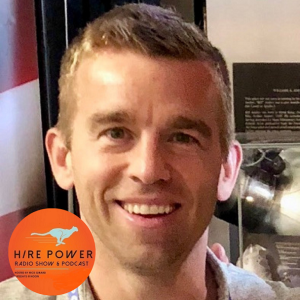
Thursday Mar 25, 2021
Thursday Mar 25, 2021
If hiring right is so critical to the organization, why is interviewing the one action that is entirely left up to chance? It has been my experience that virtually zero small companies invest in training their people how to interview.
This was the experience of an extremely successful executive, Jeff. Who at the C-level had only attended a one hour session of interview training in his whole career…. 10 years ago.
It is assumed that most leaders already know how to interview but the truth is that they don't. Most of us know how to talk skills and look for likable traits. But the process is riddled with bias and assumptions. Missing the evidence that is so critical in hiring the strongest person for the role.
Our guest today: Adam Stonehocker, Head of Sales at Gemini
Adam is the head of Sales at Gemini, a data visualization company that helps executives make key decisions involving their most important asset, their people. He has led sales teams for Peek, Google, Twitter, Pandora Radio, and AdRoll, EBay.
Adam has hired over 500 salespeople throughout his career and trained his leaders to interview with purpose.
Today we discuss:
- Why you need to invest in training your people how to interview
- How to train your people to interview effectively
There is a belief that there is no right way to interview and in the end it all comes down to “trusting your gut” and pulling the trigger... So wrong in every way!
Why don't companies invest in interview training?
- Attrition was 20% per month with poor hiring
- Team only hit 85% of goal for the year
- Culture was terrible
- Top performers said “your hiring anyone who can breathe”
Why is this important to the company?
- Without recognition & change top performers would have left
- Interview team has no idea how to identify the right people,
- You have to get the right people on the bus
- Upper management not happy
- Costs a lot of money when you have a leaky bucket
Rick’s Nuggets
- Every company should prioritize training everyone who interviews for the company
- Systems put in place maximize productivity & efficiency of your employees
How do we solve the problem?
- Identifying core values & culture that you want to hire for
- Make sure everyone is on the same page
- Hiring managers, recruiters,
- Structuring the Interview guide
- Gauging the competencies in the interview guide
- Coachable: Role play exercise to implement feedback from prior interviewer
- Training
- Values we’re looking for
- Interview guide gauges those values or competencies
- Role playing with each other
- Using the interview guide as a script
- Feedback loop and discussion from the group
- Reps/future managers take part in calibration and interviews
- Quarterly calibration
- Continually updating the interview guide
- Have your needs changed?
- Are there questions that aren’t pulling the right competency
- Problem questions that most people stumble on?
- Feel of the interview, is it intense or laid back and fun? Your interview feel should match your culture
Rick’s Nuggets
- Write behavioral questions that uncover evidence to support your company values
- Write follow up questions for deeper digging
- Assign to each team member
- Role play
- Practice makes proficient
- How did that work?
Key Takeaways :
- Define your values/culture
-
- Everyone on the same page, looking for the right types of talent
- Only then can you ABR (Always Be Recruiting)
- Structure your interview guide to gauge value competencies
- Set up quarterly calibrations to refine interview guide, interview skills,
- This is where your team continually sharpens the saw,
- Feedback loop on interview process
Links:
LinkedIn: https://www.linkedin.com/in/adamstonehocker/
Websites: https://gogemini.com/
This show is proudly sponsored by Criteria Crop: https://www.criteriacorp.com/
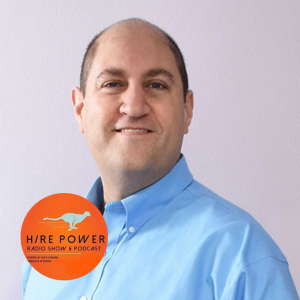
Friday Mar 19, 2021
Friday Mar 19, 2021
Thinking about the people you hire as objects or obstacles to achieve your company goals is poison.
Often we venture into the hiring process with the mindset of “how can YOU help ME”. This is wrong in so many ways. Especially if your goal is to fuel the growth of the organization.
The truth is, the people you hire could care less about you and your goals. This is why people take your job simply for the paycheck and bounce at the first hint of trouble.
Understanding the other person’s pain & desires allows you to connect the dots, for both parties, of how they can bring maximum impact to their careers and the company.
Our guest today: Jonathan Domsky, Founder of Untangled Coaching
An entrepreneur since he was 24 years old, Jonathan uses many of the same tools as a traditional business coach—goal setting, accountability, best practices. But his purpose in life is teaching personal mastery.
Jonathan’s superpower is to distill this wisdom into practical, easy to understand, and simple to apply tools that will make your life more easy, meaningful, and joyous. To untangle the clutter in your business and life so that you can be your best, most authentic self. And most importantly—see a clear path on how to get from where you are right now, to living your beautiful future.
Today we discuss:
- Why you need to change your hiring mindset
- How to shift your mindset to fuel growth
Challenge today?
- Hiring manager hires people who are not a good fit for the company.
- Only thinking about what’s in it for me
- Not long term
Why is this important to the company?
- Behavior drives results. But what drives behavior? Training and incentives aren’t enough. The answer is mindset
- Outward mindset is a tool, a lens, that gets everyone on the same page
- Side steps personal issues to allow focus on the organization
- It allows space to find solutions to things that aren’t working
- Change success metrics (data point)
Rick’s Nuggets
- Shift from listening to answer to listening to understand
- Need to fill & ego drive hiring. Period
- Result 51% bad hires
How do we solve the problem?
- Seeing others as having needs, challenges & objectives of equal importance to our own
- First ask- what is needed?
- Remind yourself “am I doing what is in the best interest of all parties”
- Realize the impact that has been received by you in your career
- Can you state the top three goals and objectives of key coworkers?
- How does what you do affect other people in the organization?
- Adjust efforts to actually help them
- Make a list of the objectives, needs, and challenges that belong to the people you impact in the organization--peers, manager, direct reports, candidates. If you aren’t 100% sure, ask them. Evaluate how you are helping these people accomplish their objectives, meet their needs, and face their challenges. Make a list of ways you can improve
- If the success metrics and incentives in your organization are inward, then an outward mindset is unlikely to have a lasting impact. Change those metrics so that they are focused less on what you do and what you get, and more on how what you do affects others
- What are your current metrics around Selection and Onboarding--do job descriptions and training simply describe what the employee is hired to do? Or does it also explain why they do what they do, and what is the desired impact?
- Reporting Practices--are they used to control and monitor or to empower?
- Incentives and Compensation and Performance Management--Are people rewarded for individual performance, or for accomplishing group goals?
- What are negative effects of inward thinking in these areas? What are ideas to approach this with an Outward mindset?
- Measure results
- Check in to see that their needs were actually met. Adjust your efforts accordingly
Rick’s Nuggets
- First- Understand what the business needs, not your ego
- Second- Understand what the person needs for themselves
- Third- Connect the dots
- Value load every challenge into the person’s desires and allow them to make an impact
- Metrics: Time saved, interview experience
Key Takeaways -Value:
- Are the success metrics in your organization inward or outwardly focused? How could you make them more outward focused in order to experience less drama and conflict?
- Carefully consider this statement--As far as I’m concerned, the problem is me. I am the place to start.
- Who is one person who needs more from me than I am currently giving? What more could I begin to contribute today? How could I know that my actions made their life easier?
Links:
LinkedIn: https://www.linkedin.com/in/jonathan-domsky/
Websites: https://untangled-coaching.com/
Facebook: https://www.facebook.com/jonathan.domsky
YouTube:https://www.youtube.com/channel/UCCtBAgyPKr5_-boeLjQWFGA
This show is proudly sponsored by Criteria Crop: https://www.criteriacorp.com/

Thursday Mar 11, 2021
When to Hire Freelancers vs Full Time Talent with Shahar Erez of Stoke Talent
Thursday Mar 11, 2021
Thursday Mar 11, 2021
Do you really need a person full time or will a freelancer suffice? Often the need to get work done clouds our vision who we really need.
Ask yourself, “what does the business need?” and what is the timing in which the work needs to be done. When you need something quick, you most likely need a freelancer. But know that your explicit communication is the key to successful project completion.
Just don’t shortcut the selection process and hire those who get it, want it and can deliver results.
Our guest today: Shahar Erez, Co-Founder & CEO of Stoke Talent.
An experienced executive with solid engineering, product and marketing leadership backgrounds backed up by sound results. He has more than 15 years of experience in various management positions in a wide range of organizations building stellar teams and leading them to new levels of success in highly competitive markets.
Shahar has hired hundreds of Freelancers throughout his career and is here to share his expertise.
Today we discuss:
- When to hire freelancers vs full time talent
- Roadmap to how to most effectively hire freelancers
I struggle with the notion of hiring freelancers as I have time challenges in communication of expectations
Challenge today?
- There was no flood in the market of talent
- Cultural challenge
- Mental barrier
- Freelancers
- Compliance & back office challenges
Why is this important to the company?
- Get the right talent
- Agility to move fast
- Flexibility & budget control
- Quick time to hire
- Try before you buy
Rick’s Nuggets
- Even freelancers need to align with your company values
- They are part of the culture
- When values align & expectations are clearly defined the quality of work skyrockets
What is the process for hiring freelancers?
- Open to the possibility of freelancers
- No strings attached
- Budget flexibility to get work done quickly
- Training managers on what it is to manage & hire freelancers
- No need for a full interview
- Lower Expectations
- Very clear on deliverables- what to happen & when
- Start with a 2 week project
- Define deliverables
- How to operate in the two weeks
- Clear communication- more important than full time employees
Rick’s Nuggets
Interviewing Freelancers
- Must have a strong Discovery / Screening call - do not shortcut!
- Understand the person’s pain, desire & impact
- Why do they want the work??
- Every person you add has an influence on culture
- Do they get it, want it, and have the capacity to do the work? - Gino Wickman
- Do not hire if they are just there for the paycheck
Key Takeaways -Value:
- Number of independent contractors are growing and will make more than 50% of workforce within the next 5 years
- Prepare your organization and leaders to operate within this new workforce composition model
- You should treat this as strategic shift and get a platform to assure you are managing this correctly
Links
LinkedIn: https://www.linkedin.com/in/shaharer/
Websites: https://www.stoketalent.com/
Facebook: https://www.facebook.com/stoketalent
Twitter: https://twitter.com/shaharer
Twitter: https://twitter.com/stoketalent
This show is proudly sponsored by Criteria Crop: https://www.criteriacorp.com/
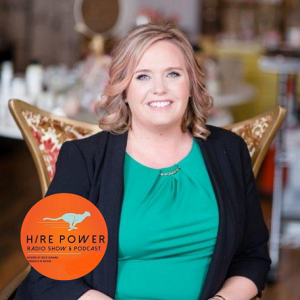
Thursday Mar 04, 2021
Thursday Mar 04, 2021
How many resumes do you need to see to fill a role? Let’s take it a step further. How many people do you need to interview to fill a role? If you guessed One, you are correct!
So, what is wrong with Gloria wanting to wait to interview other people before making a decision on the person that was just interviewed?.......Everything!
Waiting to interview other people is a ridiculously clear beacon that you have a weak interview process. Not being able to gather enough data and make a decision within 24 hours is not only a waste of your time, but the other person’s as well.
Comparison shopping is how bad hiring decisions are made.
Our guest today: Jodi Brandsttetter, Chief Talent Strategist of Lean Effective Talent Strategist, LLC
Jodi is passionate about talent acquisition and uses design thinking in creating selection and hiring processes focused on people and business. She is certified through IDEO U in design thinking.
Jodi is the CEO and founder of Lean Effective Talent Strategies which includes The Hiring Blueprint, talent acquisition consulting firm and Talent Acquisition Evolution, a community for recruiting professionals to connect, learn, and work together.
Today we discuss:
- The dangers of comparison shopping when it comes to hiring
- A plan of attack to enable quick decision making for each individual interviewed
Why do we feel like we want to see more people before we make a decision?
- The hiring manager lacks confidence in making a decision with just one interview.
- Being able to communicate the desire skill set and experience needed to find the best candidate
- Understanding the motivators
- Miscommunication between the manager and recruiter on the best candidate for the role
- Or no communication between the manager and recruiter
- Not everyone is the same person- shrug off bad hires
- Stupid Assumptions!
Why is this important to the company?
- Having confidence in pulling the trigger with the first person will lower time to hire/fill.
- By hiring the first person who is align with the role, there can be a positive impact on the business in a faster time frame.
- Builds a stronger relationship with the hr/recruiting team when a hiring manager knows what they need and able to make decisions in a timely manner.
People will judge you based on the quality of your questions. Therefore, your interview questions must be intentional and have a specific purpose.
How do we solve the problem?
- Recognize that you do not have the tools and experience in hiring to have real confidence in your hiring decisions.
- Join Hiring Managers Anonymous, a community for hiring managers who have a hiring problem.
- Step 1: Admit that you have a hiring problem
- Step 2: Believe that there are tools and training available to help you.
- Step 3: Find training and tools to help you become a confident hiring manager.
- Step 4: Start your learning journey with the training & tools
- Step 5: Make a Candidate Persona to understand who your ideal candidate is and focus on them.
- Step 6: Communicate with your recruiter/recruiting team so that they can find the ideal candidate for you.
- Step 7: Use the training and tools to make decisions while interviewing.
- Step 8: It is ok to fail. Shake it off and try again.
- Step 9: Be open to feedback and continue to improve.
- Step 10: Once you become a confident hiring manager, carry this message to other hiring managers and continue to practice these principles.
- 10 Step Program to Help Build Confidence in your Hiring Decisions
- In order to have the confidence, you need help.
- Join Hiring Managers Anonymous, a community for hiring managers who have a hiring problem.
Rick’s Nuggets
- Interview questions are the root of interview failure
- Questions must be tied to corporate values
- Linked questions have purpose & produce evidence
- Eliminates bias
- Promotes diversity in thought & experience
- Train your employees how to interview
- Assign interview questions
- Conversational evidence gathering
Key Takeaways -Value:
- Join Hiring Manager Anonymous and find training and tools that will help you have confidence in hiring.
- Use a Candidate Persona to create your ideal candidate.
- Communicate who your ideal candidate is to your talent acquisition team and work in collaboration with them.
- Be willing to fail. It is the only way you can learn.
Links
LinkedIn:https://www.linkedin.com/in/jodibrandstetter/
Websites: https://letscincy.com/index
Facebook: https://www.facebook.com/letscincy
Twitter: https://twitter.com/jodi_recruiter
YouTube: https://www.youtube.com/channel/UC2BNdy2kafFSs-cimLyBPBA
https://www.youtube.com/channel/UCToc02W0GAFHMhXWJZIbhxQ?view_as=subscriber
This show is proudly sponsored by Criteria Crop: https://www.criteriacorp.co
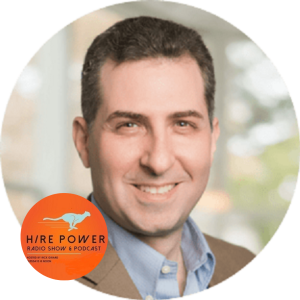
Thursday Feb 25, 2021
Beating The Job Description Dead Horse with Mark Herschberg of The Career Toolkit
Thursday Feb 25, 2021
Thursday Feb 25, 2021
Why do I need to waste my time writing a job description? You might ask.
The answer is: To save Time … & be able to Sleep
The Job Description is there to evaluate how successful the person you hired is in the role they were hired for. Consider it the essential evaluation tool to manage expectations... A syllabus for success.
Investing the time up front will allow you to set the performance metrics the person needs to achieve in the critical first 90 days. Thus cementing quantifiable data to ensure a successful hire.
And that just helps all parties sleep better at night!
Our guest today: Mark Herschberg, MIT instructor, CTO, & Author of The Career Toolkit
From tracking criminals and terrorists on the dark web to creating marketplaces and new authentication systems, Mark has spent his career launching and developing new ventures at startups and Fortune 500s and in academia.
He helped to start the Undergraduate Practice Opportunities Program, dubbed MIT’s “career success accelerator,” where he teaches annually. Mark helped create a platform used to teach finance at prominent business schools. He also works with many non-profits, including Techie Youth and Plant A Million Corals.
He was one of the top-ranked ballroom dancers in the country and now lives in New York City, where he is known for his social gatherings, including his annual Halloween party, as well as his diverse cufflink collection.
Today we discuss:
- Why Job descriptions are critical to the success of your company
- How to craft job descriptions that positively impact the organization
Challenge today with Job Descriptions?
- Vague
- Too much redundant information
- Missing information
- Break down what the tasks are ie:% of time
- Understanding the skills
- Defining soft skills
- Technical knowledge- not digging deeper
- Throwing up barriers
- Unclear job description leads to unclear evaluation of the interviewee
Why is this important to the company?
- We waste a lot of time interviewing the wrong people
- We hire for the wrong reasons
- Breeds a underperforming team
- Infects the culture
- Domino effect downgrading the business
- No compensation for a good teammate
Rick’s Nuggets
- A job description is not a wishlist of skills
- Job description and job advertisement should be the same document
How do we solve the problem?
-
- Working backwards
- Define the specific attributes that are wanted
- Uncover the why
- Similar mentality bread into the person
- Industry
- Write the job description
- Start with a selling point
- Getting everyone on the same page
- Define the interview questions
- uncover how the person fits the company
- Working backwards
Rick’s Nuggets
- What’s in it for me? (pain)
- Problems solved
- 90 day performance metrics
- Includes hard & soft skills
- About us
- Call to Action
- Homework before resume submittal
Key Takeaways:
- Step 1 of hiring: define the role, including the qualities you’re looking for, beyond just knowledge and experience
- Step 2: make sure everyone on the hiring team is clear
- Step 3: make sure the questions you ask align to evaluating on what you’re looking for
Links:
LinkedIn:https://www.linkedin.com/in/hershey/
Websites: https://www.thecareertoolkitbook.com/media
Facebook: https://www.facebook.com/TheCareerToolkitBook
Twitter: https://twitter.com/markaherschberg
Twitter: https://twitter.com/CareerToolkitBk
Instagram: https://www.instagram.com/thecareertoolkit/
This show is proudly sponsored by Criteria Crop: https://www.criteriacorp.com/

Thursday Feb 18, 2021
Thursday Feb 18, 2021
No one is interested in working for your ego. Just ask our friend …. Dick (name changed to protect the innocent).
Dick is a VP of a small, well funded start-up and very proud of what they are building. So proud that he has established a very high bar for the people he wants to hire. Let’s just say his expectations are a bit out of whack! He has Ferrari expectations on a Hyundai budget.
The way in which the interview is conducted comes across as adversarial. Dick comes across as a real, well you know…. Horses ass. As a result, some fantastic people have opted not to accept his offer and negative Glassdoor reviews are abundant.
Today is about how to NOT run off talented people in your interview, just like Dick.
Our guest today: Molly McGrath, Founder of Hiring & Empowering Solutions
Molly is a National Podcaster, decade long national blogger and 2 x Amazon #1 Best Selling Author. She has coached, consulted and directed presidents and founders of national organizations and over 4,000 small business owners in; executive-level leadership, continuous improvement and team empowerment initiatives to infiltrate new markets, leveraging partner ecosystems and producing profitability.
Today we discuss:
- How you come across as Dick
- How to fix the problem even if you are a Dick
Full disclosure: My dad’s name is Dick…. Sorry dad!
Challenge today?
- Entrepreneurs don't believe that is a employee market
- People are looking for an opportunity
- People need leadership
- No one needs a job for a paycheck
- Realize that you are not the prize
- Recruiting is 100% sales
- You can't hide the fact that you are an asshole
- You are responsible for the energy that you leave in every room
- The interview is reckless
- You have to be
Why is this important to the company?
- Mis-hires
- Brand Reputation Management
- Ability to hire
- Social Media, Glass door Reviews
- Greatly reduce your ability to hire
Rick’s Nuggets
- Own who you are
- No matter how great your company is, it is not the prize
- Means to an end & a Paycheck
- Two words: Improper screening
How do we solve the problem?
- Audit on current interviewing, onboarding, & training process
- Make it safe
- Name it and own it
- Be clear on who you are, prepare people for the interview
- Treat your interview like a client
- Brand reputation management
- End process gracefully
- Leave them better than when they entered
- Close the loop
- Feedback
- Honest & intentional feedback
- Be a coach, leader, mentor
Rick’s Nuggets
- Preparation for everyone in the interview process.
Key Takeaways:
- FINDING ROCKSTAR/Batteries Included EMPLOYEES-- hiring and recruiting is 100% sales. You are selling YOUR COMPANY. don't make the entry point harder than hacking the white house--- keep your ADS short/empowering- don't include salary….you might push away a superstar b/c your top pay is dollars short of what they are worth. You want to take EVERYONE….interview for mindset/emotional intelligence/core values and don't get seduced by the resume. You can always training knowledge & Skillset BUT the Human stuff is what destroys a team.
- KEEPING ROCKSTAR EMPLOYEES---Once you have a rockstar team-- don't get too cocky and think you're safe. Implement a quarterly “Employee Growth Plan'' for very employee in your business. This is the KEY to keeping and creating lifetime employees. Please feel free to email me and I will give you my process for free, as a listener of Rick’s. Nothing makes me HAPPIER as a recruiter when In box an employee and say “hey, are you happy & being treated well @ your current job or are you interested in hearing about a great opportunity…..” and then i get a response “I am VERY happy where I am, not interested!” i will immediately go check out the company they are working for and can IMMEDIATELY see the culture/values/ of that company and get so hopeful there are amazing companies finally understanding the value of team empowerment!
- PERSONAL GROWTH is MORE Important than Professional growth-- when you invest in your team and invest (pay for!!!) coaching programs, mindset programs and have them CONSISTENTLY enrolled & engaged in coaching and personal development & growth your employees wont leave! (I will elaborate on ALL of this more during the LIVE.)
Links:
LinkedIn: https://www.linkedin.com/in/molly-hall/
Websites: www.hiringandempowering.com
Twitter:https://twitter.com/HireAndEmpower
This show is proudly sponsored by Criteria Crop: https://www.criteriacorp.com/
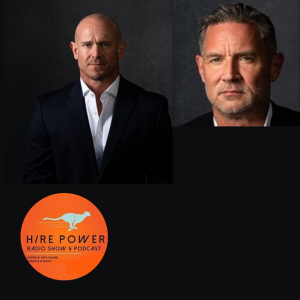
Friday Feb 12, 2021
Friday Feb 12, 2021
Think what you may about the military but the truth is they hire better than you!
They developed and refined a process that, over time, has ultimately uncovered those individuals who exemplify the core values that are critical to the success of the organization and the mission.
A strong commitment to We, before Me! …which is what your company needs
Today is about lessons learned from Special Forces that you can apply to your company, to ensure that you are hiring the people who also share your company's core values.
Our guests today: Michael Sarraille, Founder & CEO of EF Overwatch, & George Randle, managing partner at EF Overwatch & Head of Global Talent Acquisition of Forcepoint.
Mike Sarraille is a former Recon Marine and retired US Navy SEAL officer with twenty years of experience in Special Operations, including the elite Joint Special Operations Command.
George Randle is a former US Army officer, and Vice President of Global Talent Acquisition at Forcepoint, a human-centric cybersecurity company. George has more than two decades of experience in talent acquisition at Fortune 100 and Fortune 1000 firms.
Today we discuss:
- Why it is critical for values to align with the mission
- How to Model Military Special Forces in Hiring Talent
Can we all agree almost every core business problem can be traced back to a people problems?
Knowing this, why do we set ourselves up for failure by hiring the wrong people?
Challenge today?
- Companies are terrible at hiring
- Not the best leading recruiting
- Actions don't reflect people importance
- Wrong people leading people
Why is this important to the company?
- If you don't achieve strategic competitive advantage over people, you will fail
- Weak HR function- CEO’s need to empower HR to breed success
- Every business function starts with people
- Costs are 213-1500% for a senior executive bad hire
- Direct cost- 2-15x the person's salary ($3400 per every 10k in salary)
- Indirect cost- disengaged employees
- Run out your A-players
Rick’s Nuggets
- Disengaged employees are easier to pluck out of your company when leadership is compromised
How do we deploy into your company?
- Focus in talent management solutions
- Talent diagnostics
- Leading in talent management first
- Starts at the top
- Investing into your people
- Constant Training (less than 1% of companies do this)
Key Takeaways:
- Look in the mirror
- Treating your human capital as discipline, rigor & focus as you do on your financial?
Links:
LinkedIn:
https://www.linkedin.com/in/michaelsarraillemba/
https://www.linkedin.com/in/georgelrandle/
Websites:
Facebook:
https://www.facebook.com/efoverwatch/
https://www.facebook.com/talentwargroup/
Twitter:
https://twitter.com/MJSarraille
https://twitter.com/EfOverwatch
https://twitter.com/talentwargroup
Instagram:
https://www.instagram.com/efoverwatch/
https://www.instagram.com/talentwargroup/
This show is proudly sponsored by Criteria Crop: https://www.criteriacorp.com/
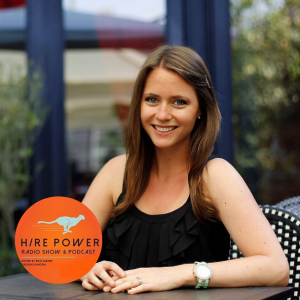
Thursday Feb 04, 2021
Remote Interviewing Done Right with Brenna Loury of Doist
Thursday Feb 04, 2021
Thursday Feb 04, 2021
The remote interview is still a HUGE challenge for a lot of companies. Especially for those of you who are lacking a formalized process.
Simply evaluating skills and heavily relying on “vibe” to influence decisions is producing even worse results in this work from home environment.
Too much is able to remain hidden because video is limiting on the non-verbal cues that happen in the interaction.
Assumptions, bias and misinformation have become the new plague in today’s interview.
Today is about nailing your video interviews to ensure the strongest hire!
Our guest today: Brenna Loury, Head of Marketing for Doist.
Brenna Loury knows that the road to success isn’t a path you find — it’s a trail you blaze.
Fueled by her unorthodox marketing efforts, Brenna left her PR firm and joined Doist full-time in 2014. She handles everything from overall marketing strategy, to HR duties, to writing website copy. She’s helped expand Doist’s remote-first team from 5 to 92 employees in over 30 countries, and her grassroots marketing strategies have helped bring the company over 25 million users globally.…And everyone is remote!
Today we discuss:
- Why the Video Interview is so challenging today
- How to master the video interview
Challenge today?
- Not meeting in person
- Touch points have gone away
- Video interviews - change in format
- Onboarding
- Hire based on core values
Why is this important to the company?
- 98% employee retention rate
- Benefited the business
- People are happy and the quality of work
- Willingness to go above and beyond
Rick’s Nuggets
- Limited view of subject
- Uncomfortable/unnatural interaction
- Breeding ground for assumptions & unconscious bias
How do we build into your company?
- Same interview process across the company
- Structure
- Hiring committee (3 people)
- 1 hour interview
- Add insight question for people who submit a resume
Cultural Interview - team manager
- What are the challenges that Doist’s products are trying to solve that most excite you? (did they do their homework?)
- How might you improve our landing pages/XYZ? (can they be radically candid?)
- Tell me about a time in your personal life or at work when you had to be very detail oriented.
- Tell me about a time when you completed a project 100% on your own. How did you get started and what was the outcome? (can they work autonomously?)
- What’s the last good book that you read? (interests/life outside of work)
- Favorite apps on your phone? (interests/life outside of work)
Technical- person assigned (senior people)
- Judging the skills
- Can you tell me about a company that you think does a great job at product marketing?
- What are the advantages/disadvantages of using CSS preprocessors?
Test Project
- Pay people to do the work
- Examples:
- Create a week-long social media plan
- Write a blog post about a product update
- Create a Hacker News style reader
Cultural Final - leader/executive
- Covers 5 core values: Mastery, Independence, Communication, Ambition & Balance, Impact
- Behavioral questions:
- What’s the difference between someone who’s good in your field versus someone who’s outstanding?
- Tell me about a time when you disagreed with a team member. How did you approach that situation?
- Tell me about a time that you went above and beyond what was expected? What motivated you to do so?
- Behavioral questions:
Rick’s Nuggets
- Phone Screen / Discovery Call
- Pain, Desire, Impact
Key Takeaways:
- Prioritize hiring for cultural fit – some technical skills can be learned later on the job
- Do everything you can to cultivate an environment that values trust over tracking
Links:
Website: https://doist.com/
Blog: https://blog.doist.com/
Twitter: https://twitter.com/doist, https://twitter.com/brennakL
Relevant blog posts:
This show is proudly sponsored by Criteria Crop: https://www.criteriacorp.com/
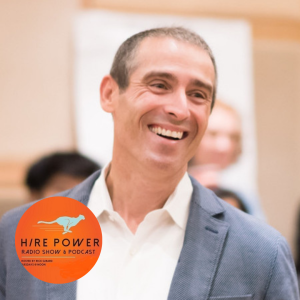
Thursday Jan 28, 2021
Thursday Jan 28, 2021
High performance teams don't just happen by chance. They are artfully built with an impenetrable culture at its heart.
The people who join are in alignment with the values and purpose of the organization. The result is unrivaled performance above and beyond your expectations.
Our guest today: Greg Besner, Founder and Vice Chairman of CultureIQ
A global company that helps organizations create high-performance cultures. He and his firm have assisted more than one thousand organizations and millions of employees strengthen their company culture.
Greg was an early investor in Zappos which inspired his commitment to organizational culture. In 2018, he was ranked in USA Today as the 8th best CEO in the United States among a pool of 50,000 companies. He was also named the EY Entrepreneur Of The Year®.
Today we discuss:
- Why, if you are serious about your business, you need to prioritize your company values as the heart of your hiring decisions
- How to deploy a process to enable your company to hire people who continually raise the bar for performance
I find that often the phrase “not a good cultural fit” is an easy cop out line for a company to pass on people. When asked “HOW” the conversation quickly disintegrates.
How can someone not really make that conclusion when they lack clarity on what their culture/purpose is?
Challenge today?
- Recruiting for purpose/ culture alignment
- Zoom interview
- Body language/ energy
- Human interaction
- Interact in the environment around them
- Fumbling with this new interview process
- Onboarding
- Energy of the office not really happening
- Interpersonal mingling
- Because the human interaction is missing
- Elevates chance of bias
- People are uncomfortable in a video interview setting
Why is this important to the company?
- Culture alignment
- Diversity of experience, perspective
- Recruiting process is opposite of what it is today
- Expensive to recruit & train
- Turnover is expensive
- Employees who are not aligned with the purpose are expensive
Rick’s Nuggets
- Bias is a two way street
How do we build into your company?
- First interaction is a 2 sided conversation- human interaction
- Experience of working in the organization
- Company go first
- Let the person give their elevator pitch
- What would allow them to be successful at the company
- Having a framework
- Notes should be taken, structured, & details on their values
- Mutual agreement on moving forward
- Letting the person know the next steps
- Transparency
- Closure
- Interviews
- Teammate or HR first
- Try not to replicate the interview!
- Multi-step process
- Split up to cover different roles
- values from skills
- No need to cover the same questions
- hire bar raisers
Rick’s Nuggets
- First interaction: Discovery call
- Understand Pain, Desire, Impact
- Listen to understand first
- Buy in through connecting the dots
- Presenting back what fits, & what does not
Key Takeaways:
- Bar Raisers-
- Structured Interview Process
- Transparency in Hiring Process
Links
Email: greg@cultureiq.com
LinkedIn:https://www.linkedin.com/in/gregbesner/
Websites:
http://theculturequotient.com/
http://getsunflow.com/
Facebook: https://www.facebook.com/CultureIQ/
Twitter: https://twitter.com/cultureiq
YouTube: https://www.youtube.com/channel/UCSECYe1wg_KxMi_yNi7KQbA?view_as=subscriber
Instagram:https://www.instagram.com/cultureiq/
This show is proudly sponsored by Criteria Crop: https://www.criteriacorp.com/
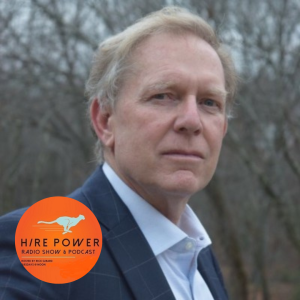
Thursday Jan 21, 2021
Thursday Jan 21, 2021
One bad hire in your startup negatively affects your balance sheet and is the fuel to future boardroom conflict.
Often, we entrepreneurs feel the pressure to fill our roles at the expense of elevating our people's performance. This disintegrates the company values and results in the exit of your strongest players.
Today is about hiring “gravitators” and avoiding the “disintegrators” that will surely be the subject of boardroom conflict.
Our guest today: Rod Robertson, Founder & Managing Partner of Briggs Capital.
Rod is an international entrepreneur and co-author of the book The Human Vector. He has conducted business in over 15 countries while focusing on developing small-to-medium-sized businesses and taking them to market worldwide.
Robertson’s career in transaction experience and entrepreneurship includes guest lecturing around the globe at institutions such as Harvard Business School and other top-flight MBA schools as well as business forums and news outlets worldwide. He sits on numerous boards, guiding firms to streamline operations and make businesses more profitable before selling.
Today we discuss:
- The difference between hiring a gravitator vs a disintegrator
- Why this is important to your board of directors
- How to gain evidence to support hiring the right person - a Gravitator
Challenge today?
- Companies have no room for error in hiring
- Hiring folks that can contribute to increased value of the firm
- Boards are looking at the income statements & balance sheet
- Are they cohesive with growth strategies?
- How to assess quickly to unload non performing employees
Why is this important to the company
- In 2021 the PPP bailouts have run their course - no margin for error
- Your hires must stick - no “numbers game” in hiring
- The co culture equal to individual go
Rick’s Nuggets
- A speedy hire often results in a miss hire
How do we fix this issue in your company?
- Bring on more outside Board of Advisors (not traditional Boards) to analyze and share the responsibility of hiring and layoffs
- Human Vector
- Systematic approach to maximizing employee performance
- GRAVITORS can change employees “angle” to the” Vector”
- INTEGRATOR -manager who accelerates integration of employees
- FUNNEL OF VECTORS acceptable deviation of employees from company values
- DISINTEGRATORS a disruptive employee
- Attributes as they relate to the goals of the company
- Management hiring and termination based more then ever on cash flow
- Quantitative analysis trumps culture for now
- $1.9B stimulus will prop up economy for six months then economic slide predicted for balance of 2021 thru 2022
- Small to medium size businesses must pivot quicker then ever
- Using outside Board members or advisors to make quantitative decisions should be utilized
Rick’s Nuggets
- Behavioral Interview
- Tie interview questions to your company values
*Knockout:
- Tell me about your most difficult Customer interaction (give wow)
- What were the circumstances that led to the difficulty?
- Break down the steps you took to resolve the problem
- What was the root of the customer issue?
- What solutions did you come up with?
- How were you able to calm them down?
- How were you able to deliver beyond their expectations?
- How did the interaction end?
- Why was their view important to you?
Key Takeaways:
- During these difficult times, systematic hiring and termination most adhere to a firm’s financial
- Outside Advisory input can bring clarity to growth and/or scaling back strategies
- It’s a perfect time to shake up your roster!
Guest Links:
LinkedIn: https://www.linkedin.com/in/roderickrobertson/
Website:www.briggscapital.com
This show is proudly sponsored by Criteria Crop: https://www.criteriacorp.com/
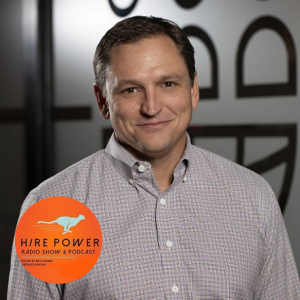
Thursday Jan 14, 2021
Thursday Jan 14, 2021
There needs to be a deliberate cadence to your interview process.
Just like a first date, you wouldn't say “hi, I'm Rick. before we start the date, I’d like you to complete this sexual survey and if I like your answers, we can continue the date.”
Now it may work on some people. But the question you need to ask yourself is who exactly are you weeding out? Answer… A-Players!
Today we are talking about the pros and cons of screening mechanisms and the proper order to deploy them to keep people engaged.
Our guest today: Joel Patterson, Founder of The Vested Group
A business technology consulting firm in the Dallas, Texas area, and ForbesBooks author of The Big Commitment: Solving The Mysteries Of Your ERP Implementation. In 2011, Patterson founded The Vested Group, which focuses on bringing comprehensive cloud-based business management solutions to start-ups and well-established businesses alike.
Joel has hired hundreds of engineers & consultants and has learned a lot about what works in an interview process.
Today we discuss:
- Why a proper cadence is so critical in keeping top talent engaged
- How to set the correct sequence to avoid triggering “fight or flight” in top talent
Challenge today?
- Saving your time with a video screen first
- Wasting a lot of time with interviews of unqualified people
- Need to be efficient with people's time- billable resources
- Elevated the quality of the people hired
- Not as many bad hires
- Missing out on good talent?
- Do people want to jump through hoops?
Why is this important to the company?
- Cost to replace a person
- 100-150k loss per person lost
- Culture impact of people coming and going
- Sunday test- call on a sunday
Rick’s Nuggets
- Are you losing the top 20% in your screening efforts
- Transactional
- Value driven
How do we build into your company?
- Video - one way
- Phone screen
- Video Interview
- 2 sessions
- Job score card
- Core value
- Case Study to do
Rick’s Nuggets
- Discovery call (Positioning)
- PDI (Pain, Desire, Impact)
- Interview
- Culture, skills, culture, combo
- Behavioral questions
- Assessments/Assignments/Skills test
- Prefer working session to determine skills
- Connect the dots
Key Takeaways:
- Core values drive hiring/firing decisions
- Interviewers represent cross section of experience and skills levels (AMA)
- Providing purpose quickly is critical to long term hiring success
Guest Links
LinkedIn: https://www.linkedin.com/in/pattersonvested/
Website: http://www.thevested.com/netsuite-provider-the-vested-group
Facebook: https://www.facebook.com/VestedGroup/
Twitter: https://twitter.com/TheVestedGroup
YouTube: https://www.youtube.com/channel/UCHDBLjRuMtER5yUrPhZYKkw
This show is proudly sponsored by Criteria Crop: https://www.criteriacorp.com/

Thursday Jan 07, 2021
Lessons Learned from Hiring Friends & Family with Wing Lam of Wahoo’s Fish Tacos
Thursday Jan 07, 2021
Thursday Jan 07, 2021
CEO campfire horror stories often start with “In the beginning, I hired a few friends of mine”... then the story digresses from there. Sometimes the situation works out but most of the time it is a disaster resulting in a severed relationship.
Today we are discussing lessons learned in hiring from your inner circle and how hiring for growth lands great talent.
Our guest today: Wing Lam, Owner of Wahoo’s Fish Tacos
Wing Lam is the eldest of the three founding brothers and the enigmatic character widely recognized as the face of the iconic Wahoo’s Fish Taco brand. A 30-plus-year restaurant industry veteran, he is often in the public eye participating as a panelist and speaker at global events such as the IEG Conference and guest lecturing for MBA programs at Yale, UCLA and USC.
Wing is Prolific & “rich in the currency of social good”!
Today we discuss:
- The pitfalls & benefits of hiring friends & family
- Two key components to hire successfully
Challenge in hiring friends & family?
- Setting precedence
- People did not take it seriously
- Stealing
- Can't allow people to take advantage of your generosity
- Corporate hires-
- Hired from headhunters for store managers (⅖ stayed over a year)
- Moved to growing from within
Why is this important to the company?
- Mistakes cost the company money, time & morale
Rick’s Nuggets
- Expectation Alignment
- Where we fail is in agreeing on expectations up front
How do we build into your company?
- Understand culture first
- Fit is more important than skills
- Up Hire
- Too much experience is good
- Opportunity to allow the person to do what they want to do
- Others intimidated by credentials
- Didn't feel like the person would take the job
- Personality, integrity, passion
- Translates to a good hire
Rick’s Nuggets
- Positioning determines the cultural fit
- Cultivating growth is what captures & retains talent
- People want to learn, grow and tackle new challenges
Key Takeaways:
- Referrals & dig deeper
- Really understand your culture & what fits
Links:
LinkedIn: Wing Lam
Website: Wahoo’s Fish Tacos
Organization: California Love Drop
This show is proudly sponsored by Criteria Corp
TAGS : #californialovedrop #wingdash #wahooswing #giving
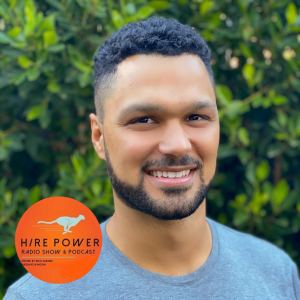
Saturday Jan 02, 2021
The Reality of Vanity Hires with Greg Toroosian of Elevate Hire
Saturday Jan 02, 2021
Saturday Jan 02, 2021
“We really need to hire a person from xyz company and they need to be from a top tier school.” Words that make every recruiting professional cringe.
This criteria is the perfect storm for making the worst hire of your career. The Truth is, Your ego WANTS these things but the business needs a person with the RIGHT DNA to fuel company growth.
Our guest today: Greg Toroosian, Founder & Managing Director of Elevate Hire
Having worked for startups, globally recognized brands, and recruiting agencies, he brings a unique perspective, a fresh sense of understanding, and an elevated level of service to his clients.
He previously held the roles of Recruiting Manager for Virgin Hyperloop and Director of Talent Acquisition for Sweetgreen. Greg believes that recruiting and retaining talent is key to having a successful company.
Today we discuss:
- Setting expectations of what you can REALLY hire
- How to hire what you can Really hire
There are 2 ways to hire A-level talent
- Pay for them
- Be the solution to their career wounds
Challenge today?
- Overall value proposition
- Competitive market
- Hard to find or in demand roles
- Stage of growth
- Disconnect on what the market really is
- budget
- Clarity on what you are actually hiring for and why
- Coming back to earth on what is really needed
Why is this important to the company?
- Impact time to hire
- Help to hire the right people
- Think through their recruiting strategy
- Help with financial planning
How do we build into your company?
- Build your value proposition
- What is it to your employees
- Cultural element
- How to communicate you culture
- Honest and open about What your culture really is
- Allow people to opt in/opt out
- Business element
- What the work is
- Product/ service
- Social good, clean energy, industry
- Clear about how it is different from their competitors
- Personal/Professional element
- What’s in it for me?
- What will I learn?
- What will this do for my career?
- Clarity On what needs to be done
- What really needs to be done?
- First hire??? Now what?
- Clarity helps to target the right people, industries, competitors
- Gain clarity on what success looks like for this role
- Understanding the competitive market
- Clarity on what you are hiring for and why
- Common complexity of what is being built
- Reality check on what you NEED to be paying this person
- Who else you are in competition with for that person
- Solutions if the role cant flex
-
- If the person you need is unhirable?
- Competition, salary, location, level of skill, small pool
- Training & molding a person intro the role
- Contractor, fully remote,
Key Takeaways:
- Craft and solidify your EVP - at least for your company. Use the cultural, business, professional buckets to help.
- Be mindful of the market you’re hiring in and self aware of your company's positioning.
- If hiring the people you want or the way you want aren’t currently realistic, then consider creative ways of making your offering more attractive or creative ways of getting the work done.
Guest Links:
LinkedIn: Greg Toroosian
Website: Elevate Hire
Twitter: Toroosian
Email: greg@elevatehire.com
This show is proudly sponsored by Criteria Corp
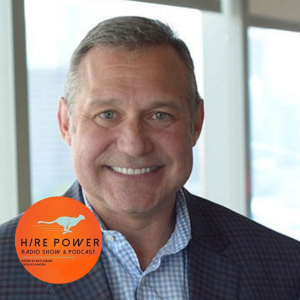
Thursday Dec 24, 2020
The Pivot to a Remote Interview Process with Vince Thompson of MELT
Thursday Dec 24, 2020
Thursday Dec 24, 2020
Please, please, please wear pants during your video interview! Both parties, not just the person being interviewed.
Just yesterday, Jessie filled me in on the horror story of her last interview. The interviewer spilled his coffee, jumped up really quickly to reveal he was in his holiday boxers. While it makes for a hilarious story, it did not win the hire for the company...
Our guest today: Vince Thompson, Founder & CEO of MELT
One of America’s most successful sports marketing and branding agencies, and author of Build Brand You .
Vince has been named one of Atlanta Business Chronicle’s “Most Admired CEOs,” among the “500 Most Influential Atlantans” by Atlanta Magazine, the American Diabetes Association’s “Father of the Year,” one of Sports Business Journal’s “Power Players,” and was listed by BizBash as one of the top 1,000 people in the event industry.
Today we discuss:
- An impressive Pivoting story doing
- Building a virtual hiring process
Challenge today?
- Business collapsed overnight on March 16th
- Overnight NCAA canceled everything
- Nobody knew what was going to happen
- Had to furlough dozens of employees within weeks
- Breakdown in demographics
- Fear & unrest
- Pandemic, unrest, election …. Oh my
- Made the shift to 100% remote
- The liability gap is HUGE
- Mitigating the litigation dream
Silver linings
- Positive forward facing manner
- Reposition the company - opportunity to showcase what they are doing
- Career development
Why is this important to the company?
- Shifted /evolved the company into a multimedia & event company
- Overnight the market shifted to buyers market
- It will kill the “bounce” mentality
- Prepare for the next evolution
- Good will is good business!
How do we build into your company?
- Building a virtual hiring process
- Bring the heat (first impression)
- Wear something nice
- Know everything about the company, job & the person you are interviewing
- Get a good feeling for the chemistry before diving in
- Trust your gut
- Cease the opportunity to really have a more thorough vetting process
- Improve the process
- What did they do for themselves & others during Covid?
- What did you do to enhance yourself?
*during this time, if nothing was done for self or others…. Not something you want to hire
- Look at the big picture of “Who” the person really is
- A whole different set of ways in which you can
- Can't coach desire & attitude!
- Put something out that is positive, and
- No bad ideas to pitch in the marketplace
- Go from crazy to genius overnight
Key Takeaways:
- Pursue any crazy idea that might have been shelved
- Use a lot more discretion in hing as it is now a buyers market
- Shift in hiring for chemistry & culture to allow us to make more value based decisions
Guest Links:
LinkedIn: Vince Thompson
Website: MELT
Email: vince@meltatl.co
Twitter: vinnyinc
This show is proudly sponsored by Criteria Corp

Thursday Dec 17, 2020
Thursday Dec 17, 2020
Skills can be learned, but who a person is, is what determines a successful hire. This all comes down to core value alignment with the organization.
Shared values create a much tighter bond and a more engaged team member.
The correct answer is rarely hiring for skills. So consider alternative hiring initiatives like an apprenticeship program designed to purely foster career growth.
Our guest today: Nicholas Wyman, President of IWSI America
Nicholas is an international expert, particularly zero-ing in on CTE education, apprenticeship and training models in the US, UK, Germany, Switzerland and Australia. Wyman writes opinion pieces for Forbes, Quartz and Fortune, appearances on National Public Radio, he has notched top education writer on LinkedIn.
Today we discuss:
- Why an apprenticeship program might be the key to unprecedented company growth
- 6 step process to build a program at your company
Challenge today?
- Can't find people with the skills they need
- Employers need to do more to train people
- Design an apprenticeship program or internship model needs to be turned upside down
- Misconception that because a lot of
- Young people who have not been able to get a start
- Displaced people who need a fresh start
Why is this important to the company?
- Skills gap has gotten wider
- Economic uncertainty
- Global economic changes
- Impact of new govt coming in
- We will not be returning to normal
- Need to really look at your talent strategy
Rick’s Nuggets
- Apprenticeships for those in career transition- modern elders
How do we build an apprenticeship program into your company?
Six Step Plan:
1 - Identify the apprenticeable occupations
2 - Form a team to run the program
- Internal team- leadership support
- Identify coaches / mentors
3 - External partners
- Deliver Training has to be structured
- Training provider
- State funding assistance
4 - Define training goals & Wage schedules
5 - Marketing & Recruitment of the program
- Brand it & give identity
6 - Develop an ongoing evaluation process
Rick’s Nuggets
- Develop everything around your true corporate values
- Interview process that uncovers evidence to support the hire
Key Takeaways:
- Broadening your view on who you might employ - broader than diversity, disability - more women (women and youth disproportionately impacted by Covid)
- Get people engaged- lost generation of young people
- Take a long range view to skills development
- Rock solid, top down support- can not be just another training initiative
Guest Links:
LinkedIn: Nicholas Wyman
Website: IWSI America
Twitter: @nicholas_wyman
This show is proudly sponsored by Criteria Corp
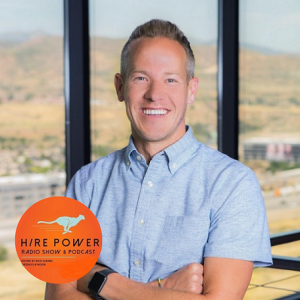
Thursday Dec 10, 2020
Hiring 250 Remote Employees in 2 Weeks with Brock Blake of Lendio
Thursday Dec 10, 2020
Thursday Dec 10, 2020
Imagine having to staff 250 roles... just as many companies were laying off and scrambling to get their PPP loans approved.
Our guest today had 2 weeks to hire 250 people to handle the demand for PPP loans and is here to share his story.
Our guest today: Brock Blake, Co-Founder & CEO of Lendio
Brock spent the last nine years developing technology to get loans to more people, more quickly, and more efficiently than traditional lenders. Under his leadership, Lendio grew to be the largest online marketplace for small business loans in America. So when the coronavirus pandemic struck, he knew he was in a unique position to make a difference.
Today we discuss:
- Creative ways to bulk hire in a short period of time
- The hiring system to be able to crush a lot of hires in a very short time
Challenge today?
- We had committed to [a company] that we would hire 25+ of their people on a temporary basis to help with PPP and then they would return to their employment. It was a win/win. The painful part was realizing the people we hired through them were not skilled in computer software and systems. We ended up keeping only 8-9 people from [Company] which put us behind in getting resources to meet the demands we had.
- Being told “we are good, no more hires” next day “Let’s get 150 hired by next Monday” and we crushed those goals
Why is this important to the company?
- Getting to the bottom of the barrel in terms of Temp to hire resources for the last group that we hired. The incentive to stay home instead of work because of the unemployment benefits had kept a lot of people from applying for work. So those that were applying by the end of our hiring process were not the most employable people. The number of wage garnishments, failed background checks, etc. was much higher for this last group than our overall hiring experience.
- Having the opportunity to extend offers to people during the pandemic. Some people were experiencing the worst few weeks of their lives and were overcome with joy when they received offers. Truly an awesome experience!
- Candidates crying on the phone with us when we offered them the position because they were so grateful to be able to provide for their families or be helping w/PPP
How do we build a quick hiring structure into your company?
- Bulk interview process
- One interview, Decision
- Creating SOPs and generic equipment setup/login instructions - Getting 200+ new hires setup and logged into equipment was a massive undertaking. Staying up until 2 am helping new hires set up their computers for the next morning
- Trying to run new hire orientation with 50+ people in a Zoom meeting who have never used Zoom or their equipment before. No understanding of the mute button.
- Guy falling asleep for 2 hours during training. Snoring.
- Being responsible for retrieving equipment; traveling to unknown places (I’m from out of state), former TMs not cooperating, equipment not being left where they say it would be, thoughts of getting Covid from equipment boxes, equipment not being packed up properly and left outside in garbage bags.
- Cops involved (one emergency contact saying that the temp was MISSING and that us reporting her equipment as stolen might help the authorities find her!) - 4 total police reports
- One person saying “If you want your stuff back, come and get it. And BTW I have COVID”
- Driving all over the state
- Condition that equipment was returned in (garbage bags, shoe boxes, etc.)
- Russ and Kimberly stories of tracking down equipment after terminations
Rick’s Nuggets
- Do not get rid of your hiring process to rapid hire
- Scale the number of interviews
- Train 2-3 interview teams to allow scale
- Assigned interview questions
- Back to back video interviews
- Be aware if interviewer fatigue
Key Takeaways:
- Have a process in place
- Don't cut corners on culture fit, screening
- Get creative
Guest Links:
LinkedIn: Brock Blake
Twitter: BrockBlake
Instagram: Lendio
This show is proudly sponsored by Criteria Corp
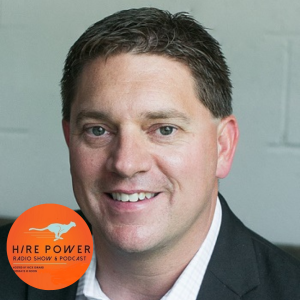
Thursday Dec 03, 2020
Thursday Dec 03, 2020
Can we all agree that the people you hire determine the success of your company. It is not enough to just “fill a role”. Especially if you're a smaller, growing company.
Every hiring mistake that your company has made is due to your focus on the wrong ego driven priorities. (Ie: the work to be done, what I think I need, image for the company)
Focus on hiring the “WHO” that aligns with the corporate values first and you’ll achieve unbelievable results.
Our guest today: Tim Spiker, Founder & President of The Aperio
...And the Who* Not What Principle, a profound research-based truth that has powered 15 years of leadership development success.
Tim’s book, The Only Leaders Worth* Following, reveals that 77% of leadership effectiveness comes from who a leader is and not what they do. Using this principle, Tim helps people become, be, and stay leaders who are actually worth following. Tim’s work includes delivering keynote talks, creating unique and customized learning experiences, and guiding long-term development journeys.
Today we discuss:
- The advantage of focusing on Who before What
- The role Trustworthiness plays in a Successful “Who”
- 3 steps to hiring the Right Who!
¾ of things working is about WHO the person is who is leading the process.
- Listening for who based questions
- Eagerness to hallmark others
Challenge today?
- Are your leaders trustworthy??
- Strong Leader:
- Who is inwardly sound and others focused = trustworthy
- Engages people at a higher level
- How much energy are you putting into your leaders to help them be more trustworthy
Why is this important to the company?
77% of leadership effectiveness comes from who a leader is and not what they do. Why? Because trustworthiness drives engagement and engagement drives performance. Therefore we must interview for and intentionally develop leaders who are trustworthy. Not leaders who give the appearance of being trustworthy, but who are actually trustworthy.
- Trustworthiness drive engagement which drives performance
- Huge Difference between image and the perception of others
- Start of a trend of external image vs
- Downside to the company - long term value creation at the fundamental level
- Company will never maximize performance of the organization
How do we hire the "Right Who" into your company?
- Become Trustworthy
- Develop the core of who you are
- Being curious - about others
- Tell me more about that...
- Depth, Community & Time
Hire for trustworthiness!
- Giving the interview questions in advance
- Let them prepare for the interview
- Dig under the hood
- Provide the Interview questions in Advance!
Interview question:
- "Tell me about a time when you broke trust with someone and what did you do to fix it?"
- Continued Development
- Use the phrase “tell me more” 100 times
- Develop those around you
- Depth
- Community
- Time
- Majoring in politics downgrades your trustworthiness!
Key Takeaways:
- Be willing to look in the mirror, courage to own your shortcomings
- To have a organization with world class leaders, you have to engage with world class conversations -
- Be willing to work on myself to set the example for the other leaders to have “who” based conversations
Guest Links:
LinkedIn: Tim Spiker
Websites: TheAperio.com (The Aperio) TimSpiker.com (TimSpiker.com)
Twitter: TimSpiker
This show is proudly sponsored by Criteria Corp

Friday Nov 20, 2020
Friday Nov 20, 2020
Data Driven Insight into Your Video Interviews.
“Look, I just need to hire someone who can do the work so we can get this product done” Said Peter. A CEO for a newly funded startup. “Besides, there is no way to really know if someone fits into the company until you experience working together”. Not true at all!
Your interview process, when structured properly, will give you all the evidence to support making the right hire each & every time. Because, as we all know, one bad hire can destroy your company!
Today we are talking about the power of digging deep on the “right” questions and utilizing AI to confirm your conclusions.
Our guest today: Scott Sandland, Founder & CEO of cyrano.ai
Scott is the former world's youngest hypnotherapist. A few companies (and decades) later he is the CEO of a company focusing on artificial empathy and strategic linguistics.
As a former executive director and CEO of a mental health clinic and longtime technologist, he has experience leading purpose driven organizations. He has been published in numerous peer-reviewed journals, Psychology Today, Forbes, and Entrepreneur Magazine.
Today we discuss:
- Getting to the truth about the person in a video interview
- How to leverage AI to confirm your hiring decisions
Companies today have an interview process that is no better than a coin toss.
- No process
- Shallow (how can you help me)
- Or rely heavily on assessments for decision making
Challenge today?
- Understanding the mental state of the person you are interviewing
- How they are thinking allows you to understand a persons mindset now
- Analyzing the what and how things are said
- Keeping track of people
- Understanding how people will fit
- Correctly auditing the client pool at scale
- People are dishonest during interviews
- Creating a right fit with a specific management style
Why is this important to the company?
- A lot of the “right” people get screened out via a resume
- People who look good on paper/resume that don’t actually fit reality of job/culture
- How to manage/mentor the person you do hire
- Right person, wrong team… vision to see who will “blow up the locker room”
- Making sure you are in a position to get the most out of a new hire
- What burns them out/demotivates them and how to avoid it
- Allow you to really utilize all the features that are strengths (create a more well rounded team!)
How do we build into your company?
- Profile yourselves & your team
- Look at the relationships of what already exists
- Understand what you really need
- Make strategic decision for similarity or diversity
- Profile each person to interview
-
- Run youtube interviews /linkedin profiles through their system
- Get a head start on your hiring process
- Creating custom interview questions based on insights
- Measure relationships between interviewer and interviewee
- Confirm understanding of what motivates and what burns out
- Accountability vs recognition environments
- Gives the tools to accurately set performance metrics
- Makes the intangibles, tangible from the beginning.
- Hire
- Confirm fit & hire
Rick’s Nuggets
- Understand yourselves then build your company values around
- Do your homework, target & connect
- Interview for values first
Key Takeaways:
- Soft skills assessment of candidates is more important than resume checklist
- Consistency and transparency in that assessment is critical, which is why machines should be used instead of a person with moods and distractions
TAGS
#AI #data #videointerview #artificialempathy #strategiclinguistics
Links
LinkedIn: Scott Sandland
Website: cyrano.ai
This show is proudly sponsored by Criteria Corp
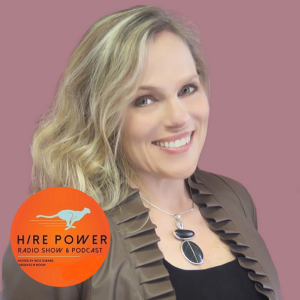
Friday Nov 13, 2020
Friday Nov 13, 2020
Entrepreneurs, take your mental health seriously because the life of your company depends on it!
Our guest today: Sally Spencer-Thomas, President of United Suicide Survivors International
Sally Spencer-Thomas is a clinical psychologist, inspirational international speaker and an impact entrepreneur. Dr. Spencer-Thomas was moved to work in suicide prevention after her younger brother, a Denver entrepreneur, died of suicide after a difficult battle with bipolar condition.
Today we discuss:
- Why it is critical that you prioritize your mental health
- The 3 components of a strong mental health practice that you can build into your company
My entrepreneurial journey has been a plethora of highs and lows… At times:
- Question my purpose
- Question my judgement
- Manifested extreme confidence followed by imposter syndrome
My saving grace: Having an outlet of physical & mental stimulation outside of business
- Jiu jitsu
Challenge today?
- Cannot let mental unwellness show to investors or competitors
- Extreme self-reliance
- Can not take a mental health day
- When things go down it is on you
- When it crashes it is on you
- A lot of pressure
- Isolation: Tend to be lone rangers
- Competition for funding, being first to market,
- Less likely to reach out for support
- Evidence that we live on the bipolar spectrum, susceptible to maina: https://www.bphope.com/entrepreneurs-success-bipolar/
Why is this important to the company?
- The entrepreneur is the essence of the company.
- You have to keep yourself well because it is on you
- People’s holistic health keeps people engaged in the company
- Talent will not stick around if they are not getting broader opportunities to find a passion for living beyond work
How do we build mental health practice into your company?
- Appreciating that our mental wellbeing is part of our overall asset to the wellbeing of the company.
- Understanding of your own mental health and how best to promote the wellbeing of others.
- Upstream about driving a culture of care -- attract and retain talent, long-arc of productivity and success
Upstream - Building protective factors, resilience as strong at it can be -- modeling self-care
- Eating, exercising, sleep
- Having the a team of the ready
- Front end your day with as much personal wellbeing investment as possible
- Walking the dog touches many aspects of wellness
Midstream - Catching things early
- Before they become catastrophic -- what are the early warning signs that the wheels are wobbling.
- Measures put in place to course correct
- https://www.helpyourselfhelpothers.org/
Downstream - Where do we turn? Resources we have access to
- Dealing with the crisis in our lives
- What is the plan
- Crisis Text Line: https://www.crisistextline.org/ text HELLO to 741741
- iRel8: https://irel8.org/
Key Takeaways:
- Commitment to investing in your health first
- Check out when your brain is not sharp
- Having a plan for crisis (personal)
- Kick the tires of mental health resources before you need them
Links
Guest website and social media platforms:
https://www.sallyspencerthomas.com/
TEDx Talk: https://www.ted.com/talks/sally_spencer_thomas_stopping_suicide_with_story
Entrepreneurs and mental health video: https://youtu.be/qrWbePKB-6A
Article: Prevent start-up suicide. Literally. Entrepreneur. https://www.entrepreneur.com/article/271435
Article: Entrepreneurs And Suicide Risk: A New Perspective On Entrapment Provides Hope. Forbes. https://www.forbes.com/sites/prudygourguechon/2018/08/23/entrepreneurs-and-suicide-a-new-perspective-on-entrapment-gives-hope/?sh=2b2e3cbb5385
Article: The Psychological Price of Entrepreneurship. Inc. https://www.inc.com/magazine/201309/jessica-bruder/psychological-price-of-entrepreneurship.html
Carson’s story: https://www.sallyspencerthomas.com/history/
https://www.facebook.com/DrSallySpeaks/
https://twitter.com/sspencerthomas
https://www.instagram.com/sspencerthomas/
https://www.pinterest.com/sallyspencertho/boards/
https://www.youtube.com/channel/UCfr2b_0rxSsItOgo021ykkw?view_as=subscriber
Facebook @WorkplaceSuicidePrevention
Twitter @WorkSuicidePrev
Insta: @WorkplaceSuicidePrevention
YouTube: https://www.youtube.com/channel/UCOjL6-clq63_G9X_F7Wp1mQ
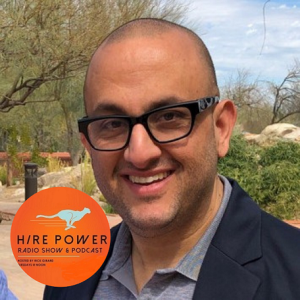
Thursday Nov 05, 2020
Thursday Nov 05, 2020
Values are the foundation of what your company is built upon. As we all know, without a foundation, the structure that is built can be destroyed at any time. Too often the foundation is poured after the structure has been built.
Our guest today: Darius Mirshahzadeh (Mir Shah Zaday), Founder of The Real Darius & Host of The Greatness Machine Podcast
Darius is a dad, husband, twin, brother and son who was born and raised in California and now lives in Austin Texas.
He is a serial entrepreneur, author, conscious capitalist, speaker and mad scientist CEO. He was ranked #40 in Inc 500 CEO’s in 2007 and #9 in Glassdoor’s Top Ranked CEOs in America for small to medium business. He participated in Birthing of Giants at MIT, graduated from Stagen Integral Leadership Program, is a TEDx curator and expert on core values. Darius’s new book, The Core Value Equation, explains everything on core values.
Today we discuss:
- Why values are so critical in landing unobtainable talent
- How to roll out a Core Values based recruiting machine
There is a silver bullet to hiring! Smart hiring decisions are much easier when you evaluate people for evidence of core value alignment, rather than skills.
Challenge today?
- Social proof
- Everyone pretends to be a cool company
- Catfishing-
- Making sure the best people show up
- A-players are never filling out job applications
Why is this important to the company?
- Not seducing with $$$
- Leading with core values
- Differentiating value proposition
- Value hires are stronger fits for the organization
- Cements a validation process
- You will win Hires
- You are building a better company
- You are only competing with yourself
- Foundation for a “REAL” conversation with each person
Rick’s Nuggets
- People are attracted to opportunities that have a fundamentally stronger foundation
- Opportunity for growth is greater which fuels more impactful work
How do we build a core value recruiting machine into your company? Discovery
What your values are
- Leading with values
- Content
- 2 of 3 hires are referral hires
Design
- High utility value
- Translate into the most powerful language
Roll out
- Teach team the language
- Immersed in the language
Implementation
- Nurture
- Implement in an ongoing basis
Measure
- Measure for efficacy and optimize based on results
Plug into your recruiting efforts
- Built a language for accountability in the organization
- Leading with values when contacting people
- Filter for decision making
- The people on the boat are in alignment with the values
- Dig deep in discovery for value alignment
Rick’s Nuggets
- Design: build interview questions that unearth evidence of alignment with your core values
- Implementation: Train & assign specific questions for each interviewer
Key Takeaways:
- Ultimate decision making engine
- Invisible scale - allow you to grow faster / better
- Magnet for top talent that shouldn't even consider your company (marrying outside your envelope)
Guest Contact & Links:
Darius: therealdarius.com
Book: The Core Value Equation (Amazon)
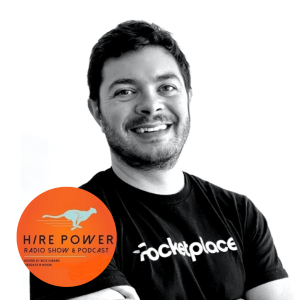
Friday Oct 30, 2020
Friday Oct 30, 2020
The keys to attraction and retention are transparency and process. Just like having a strong interview structure, Compensation structure is just as critical.
Having clearly defined salary thresholds allows people to be comfortable with your environment while eliminating uncertainty in the minds of your employees.
Our guest today: Louis Beryl, Founder & CEO of Rocketplace
Louis Beryl is the founder and CEO of Rocketplace, a curated marketplace of high quality professional service providers. A 3x founder, investor, and board member, Louis began his tech career as a partner at Andreessen Horowitz and was also previously a YCombinator Partner part-time. Outside of being an entrepreneur and investor, Louis is an avid cook and has recently been perfecting his homemade pizza.
Today we discuss:
- Benefits to establishing a compensation structure early on
- 4 step process to building a successful comp plan
Challenge today?
- Setting a correct compensation structure
- Disparity in salary
- Miscalibrated pay system
- How to promote and compensate properly
Why is this important to the company?
Ultimately compensation to align with the values of the company
- tighten range of cash & equity
- Wiggle room for negotiation
- Tradeoff flexibility
- Determine range of percentile before you start ( Netflix 110%)
- Trade off on higher compensation is a recipe for disaster
- Compensation is what does NOT determine the level
- Provides organizational transparency
- Manage expectations & promotions
When compensation changes, adjustments are across the organization
How do we build a compensation structure into your company?
Talk about what values you have in your compensation package
- People feel that teammates will be paid very similarly
Build compensation Matrix
- Cash, quality, bonus, etc
- Determine levels
- Functional areas
- Collect data (compensation data)
- Determines what percentile your organization is willing to pay
Leaders need to define what each level is
- Interview process at each level
- Promotion process
Live values through the interview process
- Adjust the interview process according to the interview
Key Takeaways:
- Think about what you value
- Think about compensation in advance
- Develop methodologies to allow the organization to scale
Guest Contact & Links:
Email: louis@rocketplace.com
Website: Rocketplace Facebook Twitter
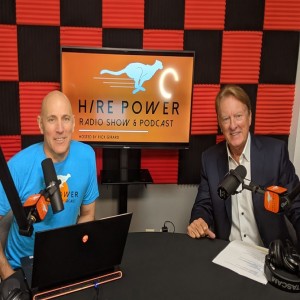
Friday Oct 23, 2020
Friday Oct 23, 2020
We are in the greatest time for opportunistic hiring! An unprecedented number of talented people are on the sidelines and now is your time to hire the people that will take your company to the next level. All it takes is some creative thinking and a plan.
Our guest today: Scott Hamilton, President & CEO of Executive Next Practices Institute (ENP)
Scott and his team of Nextworks partners provide executive and organizational programs around strategic planning & execution, internal innovation methods, performance management improvement and the pioneering use of “collective intelligence” alignment.
Today we discuss:
- Why to start executing your talent strategy next year Today
- The 3 critical elements to building your hiring plan - executing in a targeted way
I find the biggest challenge today is that business leaders have not recognized the tremendous opportunity we have in front of us. That opportunity is displaced talent.
Challenge today?
- Getting lost in the covid fog
- Getting disconnected
- Employment brand message is getting lost in all the noise
- Lost in person networking
- Need to force connections in a different way, that you don't know
- Expanding your network channels
Why is this important to the company?
- Business value proposition, new ideas come from outside our industry
- Talent: High quality talent in other arenas
- Have skills, aptitude & capabilities to be successful
- Transparency & increase communications in our marketplace
- Be found easily and understand the value in working for your company
- Diversity, Equity (level playing field) & Inclusion
Rick’s Nuggets
- Leaders are still unclear about the opportunity we are in right now!
- Disrupting your own business through
How do we build it into your company?
- Bottom up strategy
- Tap the collective IQ
- Clear on mission
- Shared purpose
- Not just say it, but live it
- Culture of learning
- Community Partner
- Talent Skills
- Valuing adaptability
- Ideation - create
- Culture that allows people to step up & take risks
- People who have good judgment
- Execution skills
- Execution
- Acting with measurable intent
- Knowing KPI’s & OKR’s
- Pace & Rhythm
- Faster cycle to fail fast, learn fast
- 30-60 days (smaller projects to allow for testing)
- Reward & recognition for hiring - referrals
Rick’s Nuggets
- Target and connect
- Build a strong referral strategy
- Communicate needs daily
- Ask for names & contact information of top performers
- Contact yourself
- Do NOT pitch your job/company/yourself
- Treat as a “get to know you” call
- Take your time
- Hire for value alignment / cultural alignment before skills
- Value growth
Key Takeaways:
- Get started now on 2021
- Business value creation
- Talent value creation
Guest Contact/Links
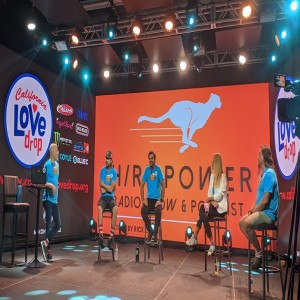
Friday Oct 16, 2020
Friday Oct 16, 2020
Consider the possibility that giving may be the answer that propels your business through challenging times.
There is nothing more alluring to talented people than a leader who finds cause to support. Especially when most businesses are hanging by a thread.
Today we are talking to four business leaders who are giving back to the community and experiencing tremendous engagement from those they serve.
Our guests today:
Charles Antis, Founder & CEO of Antis Roofing & Waterproofing
Eric Morley, Co-Founder & COO of Blue C. Creative Marketing Agency
Wendy Ellis, Strategic & Creative Partnerships at Meruelo Media - KLOS FM
Wing Lam, Owner of Wahoo’s Fish Tacos & Co-Founder of CA Love Drop
These Four business moguls came together in April of 2020, to start up a charity called California Love Drop. The California Love Drop delivers meals and treats to our well-deserving Front Line Heroes and community neighbors in need. In October 2020, California Love Drop celebrates their 100th Drop!
Today we discuss:
- The importance of finding a cause & giving now
- How to build giving into your culture to spur abundance
Now more than ever people need help. It is easy to forget this when so many of us are focused on keeping our businesses afloat.
With this uncertain business environment, your strongest talent is most likely “keeping their options open” so shouldn’t we be doing everything we can to keep them engaged and productive?
Challenge today?
- Thinking about giving when we are treading water
- Finding people that align
- Charity is the best way to find great people
- Giving philosophy
- Nothing going on so no excuse to not give
Why is this important to the company?
- Not afraid to try things and fail
- Time to do good
- Shine a light on good
- It becomes not about price but it is now about Value!
- Elevate yourself above your competition
Rick’s Nuggets
- Cause attracts winners (people who will thrive in your company)
- People desire more than a transactional relationship
How do we build cause into your company?
- Find a cause
- Alignment with your company that you hold a strong passion
- Doing something for your people that allows them to be proud of giving back
- Join it, promote it within your company
- Allow your people to own the success
- Become involved
- Participate consistently
- Make your story compelling
- Celebrate & Openly talk about your cause
Rick’s Nuggets
- Start with what is important to you and your team
- Hire for cause / culture alignment (passion to the cause)
- Build in a knockout question in your interview process related to uncovering evidence as to the real passion for the cause
Key Takeaways:
- Just say yes to helping people
- Continually show up
- Indirectly network to spur opportunity
Cause Links:
Hire Power + Working Wardrobes T-Shirt Fundraising
Today's episode made possible by Criteria Corp
#hirepowerradio #giveback #calovedrop #rebuildcareers #workingwardrobes #mixonesound
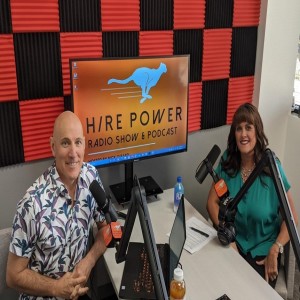
Friday Oct 09, 2020
Friday Oct 09, 2020
Our guest today: Jodi Duva, Vice President of Cox Business
Jodi is responsible for leading a world-class team delivering customized communications solutions to local business communities. Duva oversees sales and service delivery across all sales channels and has been leading one of the organization’s largest and fastest growing sales teams and consistently delivering double-digit growth.
Jodi is very involved in the community, and serves on the boards for Orange County Business Council and Girl Scouts of Orange County. She plays an active role in both boards, chairing or co-chairing key committees. Duva also gives back through volunteerism. Fun fact: Duva grew up in the Boston area and is an avid New England sports fan.
Today we discuss:
- The importance of mental health of your people
- How to build mental health culture to increase productivity
Challenge today in this work from home environment?
- Virtualizing workforce yet keeping them nimble and able to pivot for life’s everyday challenges (or something more creative)
- Keeping mentally connected and productive
- Human connection and preserving your sanity and Cox’s brand is based on “Life gets better when we have moments of real human connection”
- Working from home can lead to increased productivity and happy employees, but for some, it can cause feelings of isolation, increased stress (working too many hours and not stepping away), wearing too many hats - are you employee, mom, teacher, etc…., lack of recognition
Why is this important to the company?
- Maintaining human connections
- Productivity has not dropped off and in some cases, even gone up
- Engagement challenges
Rick’s Nuggets
- Relationships are starting virtually now. Important to create bonding moments starting with the interview.
- Extra time to become comfortable
- Invite perspective employees to virtual team based events
- Obvious solution: Implementing a policy of “me” time. Exercising, meditating and/or unplugging to balance one's self. - must alone time!
How do we keep our people sane?
- Get creative! Think outside the box. Provide tools for your employees, but personalize it and JOIN THEM! Be vulnerable, be silly, be human.
- Fun ideas: Selfie contests, Five for Fitness, Pet “yappy hour” (bring your pet to virtual happy hour)
- Yelling at your kids without the “audience” on your Zoom meeting catching on.
- Create Fun: Pickle ball court, Beer Die Table – wait am I teaching my kids how to play drinking games? Should I be ashamed or should I take the other side – well, if they are good at it when they get to college, then that means less drinking right?
- Filming Music Videos – Post your best music video to a Rick Astley Song - “Never Gonna Give You Up” – Toilet Paper dance and “Together Forever” – husband wore a dress and the wife was Rick Astley in the suit…..
Digital access to physical & mental well being
- Zoom happy hour
- Bring dog to a meeting
- Selfie contests
- Video challenges (fun)
Rick’s Nuggets
- Implement Mental health policies NOW!
- “Flag & Tag” in Communication Tool
- Calendar time into people’s schedules
Key Takeaways:
Be a leader that encourages/requires your people to do these things. And don’t forget to recognize openly and often for accomplishments. A simple email or phone call goes a long way!
- Schedule analog breaks - No technology allowed!
- Get up and move! Fitness breaks
- Make time for your favorite people
- Enjoy the wonders of nature AKA Go outside!
- Just say “no” - find balance
- Share and celebrate successes
Guest Contacts:
Jodi's LinkedIn or Email: jodi.duva@cox.com
#hirepowerradio #coxbusiness #hiring #vpofsales #leader #volunteer #mentalhealth #employeewellness #orangecountybusinesscouncil #girlscoutsoforangecounty
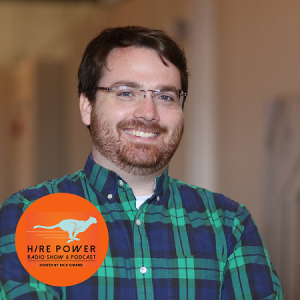
Friday Oct 02, 2020
Why the 30, 60, 90 Day Job Posting Wins Hires with Dan Moore of Vaporware
Friday Oct 02, 2020
Friday Oct 02, 2020
Our guests today: Dan Moore, Co-Founder & CEO of Vaporware
Dan is a trained computer scientist who helps clients craft ideas into scalable products. Always one for over-communication and compulsive attention to detail.
Dan co-founded Vaporware to help entrepreneurs take their software ideas to market. Over the past 7 years he has helped Vaporware deliver dozens of apps in Human Resources, Staffing, and Recruiting—all while building vaporware into a stellar organization.
Hiring a bench of developers, designers, and product managers is a challenge for any organization, but Dan has created 2 expert teams that combines all 3 roles at Vaporware.
Today we discuss:
- The 30,60,90 job posting; What it is & how it works
- How to build it for hiring success!
What is a 30/60/90 job posting?
- A better way to do job postings to find the right candidates.
- A list of objectives at different checkpoints (30-60-90 days)
- Designed to ensure proper onboarding and culture fit before the company invests too much.
What happened to drive this solution?
- Created out of personal desire because of the experience from prior companies- escape from past experiences
- How would we want to be hired?
- Tailoring to culture fit is much more important
- Allow people to do different things within one company
- Not looking at what they have but looking around ….
Why is this important to the company? Yes can meet those objectives!
- Limits company risk
- Shifts away from skills
- Keeping people onboard
- Retain people longer from 3-6 months to up over 4+ years
- Bottom line, higher attraction of more seasoned employees
Rick’s Nuggets
- 90 day performance metrics are a necessity for a successful hire
- Sets up the framework for the communication and expectation structure
- Clear guide of what needs to be accomplished by when
How do we build out a 90 day plan?
- Start with the end goal (6 months to a year)
- Stay with us forever: They’re bought into the mission and helping us define it
- Figure out how we can evaluate that in the first 90 days (limit our investment)
- Question what is realistic in 90 days?
- To get to 90 days
- Negotiation between desires and realism.
- Hope for the best but don’t negotiate your minimum expectations
- Define 60 and 30
- Break out what needs to happen for 90 to be successful = 60 days
- Break out what needs to happen for 60 to be successful = 30 days
- Keep flexible enough for applicant to define their own OKRs within that framework
- Post into job listing. Applicants can define OKRs (Objectives and Key Results) within that posting
- Reverse engineer what needs to be
- What are the OKRs
- Set up framework for people to self manage their goals
- Break things down into strategy
- Compelling ability to break things down for company
- Autonomy, bring people who are smarter and can teach us something
Rick’s Nuggets
- Additional formatting for the job add to attract passive people
- What’s in it for me?
- Solution
- Performance metrics
- Call to Action!
Key Takeaways:
- Align to culture first
- Have a 90 day plan
- Review and adjust the plan as you go
Full video of today's #hirepowerradio show available on YouTube
Guest Contact:
Vaporware website or Email: dan@vaporware.net
Links
Website: Vaporware
Vaporware's Sample: 30,60,90
#hirepowerradio #vaporware #hiring #founder #startup #business
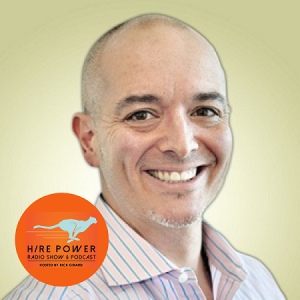
Thursday Sep 24, 2020
Thursday Sep 24, 2020
To Cultivate Employee Engagement Focus on Performance Management & Personal Development
Our guests today: Michael Caito, CEO, Management Action Programs
Michael and two business partners launched Restaurants on the Run (ROTR) with a mere $6,000. His company experienced explosive growth after Michael attended a workshop hosted by Management Action Programs (MAP).
After selling the business valued at 12x EBITDA, Michael seized an almost uncanny opportunity to purchase the very coaching firm that helped transform his own leadership and business development. He bought MAP in December 2017 and is now, serving as its CEO.
Michael both gives back and pays forward what he learns: He has been a member of Entrepreneurs’ Organization and has served as its past Global Chairman. The balance truly matters, too, fueling his unstoppable energy, direction and focus, a discipline that transpires into positive action, producing results both on the job and at home.
Today we discuss:
- Performance management & development: what is it? Why should it matter to me?
- 5 steps to building a stronger organization
The roots of a successful company (engaged team) start with your hiring process
- Snapshot of how things are done
- Demonstrates your commitment to performance
Challenge today
Staying focused on what is vital today & moving toward innovation
- First the focus was on cash
- Non market forces we can't control
- Moving toward growth & innovation
- It is all about process!
- Fake it till you make it (imposter syndrome)
- Accountability & focus alignment
Why is this important to the company
- If you are not focused, you are everywhere
- If people are not aligned, how are you getting the best self from your team
- Strategy and not chasing shiny objects
Rick’s Nuggets
- Growth must be known & demonstrated
- Promoting within first, then gathering referrals
- Focused and deliberate hiring process wins hires
How do we do it?
5 Step process to drive:
- Accepting reality
- Face the brutal facts of your business. You can't be hopelessly optimistic
- Look at what’s really going on. Outside forces
- Market & non market forces
- Having empathy with your team
- What are your people feeling?
- LISTENING!
- You may just have to fake it. Take the steps to show that you are listening
- Create an envisioned future that people can get behind
- Place that people want to get to
- Picture of where we are trying to go
- Engage your team
- Communication; work together
- Stability plan first, where are we going first
- Where we are going. Prioritize projects that move people forward
- Process in place to hold people accountable
- Cadence of accountability check ins
- Monthly check in at the minimum
- Problem solving exercises
- KPI’s & cascading goal setting system
- Everyone sets goals
- Leader has to have the system in place to align the company. EOS, Gazelle,
- Map One page business plan
Rick’s Nuggets
- Reality - great companies find a way to grow through difficult times
- Listen - to the people you interview. What’s important to them is what ensures a strong hire
- Engage- coordinate delivery & feedback
Key Takeaways:
- CEO needs to deep dive on themselves. 360 degree feedback to understand yourself and be vulnerable enough to share. Creates psychological safety with your team. Allows people to bring their best selves.
- Need a goal setting system in your company. Habits
- Have a coach to hold you accountable. “It takes a village”
Guest Contacts:
Website: MAP Email: map@mapconsulting.com
TAGS
#Michael Caito, #MAP, #Leadership, #Manager, #Howto, #Tedxspeaker, #EO, #Entrepreneurs, #Organization

Friday Sep 18, 2020
Friday Sep 18, 2020
Our guests today: Anne-Marie & Chuck Lerch, Co-Founder & CXO’s of HI Tech Hui
Chuck heads up Cybersecurity. been the CIO and CTO at numerous companies with great emphasis on security. His passion for secure networks is what led him to his love and vision to bring cybersecurity solutions to the Hawaiian islands.
Anne Marie is the CXO & Head of Counting Beans. Her love for business strategy and technology is what inspired her to start a consulting company in Hawaii. She specializes in project management for software development projects.
Today we discuss:
- Why it is important to secure your at home workforce
- Steps to take to mitigate the risk of being hacked
What are the security risks we are experiencing today with a remote workforce?
- Cyber crime is up over 650%
- Most office workers are working from home
- Companies and workers are ill equipped from a
- Culture Impact
- Technology Impact
- Depression
- Kids at home at same time
- Workers are can be less productive and not pay attention to what they are doing
Why is this important to the company?
- Money Loss
- Vendor hacks
- Moral Issues
- Productivity Issues
- Management Issues
- Home Issues
How do we secure our remote workforce?
- First we need to answer some questions and create a plan with our vCISO’s, CTO’s and Project Managers
- Understand what is at stake
- A hack can cost you millions of dollars!
- Depends on Company Budget and Industry
- HITRUST?
- CMMC
- NCUA, FFIEC -
- Healthcare ?
- Business with the Federal Government
- Banking
- Gap Assessment
- What are the weaknesses
- Corporate policies must align with security policies
- Cybersecurity hygiene
- Passwords -every login needs to have a different password!
- Remediation
- MFA- multi factor authentication
- Education & Monitoring
Key Takeaways:
- Implement education - security training, be aware so you don't get jacked
- Multifactor
- Securing the cloud infrastructure . secure the endpoints (computers) - configure against shady sites
- Monitor traffic
Guest Contacts:
Websites: HI Tech Hui, LLC or Cyberuptive

Friday Sep 11, 2020
Friday Sep 11, 2020
Today's Guest: Jerri Rosen, Founder & CEO of Working Wardrobes
Jerri’s organization helps over 5,000 men, women, veterans and young adults each year re-enter the workforce with career development services and professional wardrobing.
Today we are discussing:
- The hidden gem that is the veteran pool
- How to find and hire veterans to diversify your talent pool
Why Companies don't actively seek to hire veterans?
- Bias
- Think they all have ptsd
- Not knowing the value of the training that vets get in the military
- Not knowing the true value
- Too much bad press
- Painting with a brush that is very negative
- Vets fall on hard times because they miss the discipline/brotherhood
Why is this important to the company to hire veterans?
- Intense loyalty, when treated with dignity
- Absolutely mission driven
- Path of a veteran
- Make outstanding employees
- Can help recruit -underground network
How do we find and hire veteran talent? Decide to hire outside your comfort zone
- Outstanding, dedicated people
Finding Vets
- Active duty national guard or reserves (highly under employed)
- Vet spouses,
- Military connection through working wardrobes, on your own
- Vetnet team
Interviewing & Hiring
- Understand a MOS- military status
- Translate what was done in the military to civilian language
- Look past the acronyms
- Look for the passion & talents
- Experience & gravity of the work
- Look past the stoic demeanor
- Recognize that task at hand/orders need to shift to a “going above and beyond” mindset
- Requires a bit of patience
- Hire as normal
- Understand that everything was provided for them in the military
- Learning to operate in a very different world & culture
- Different level of expectations
Rick’s Nuggets
- Dig deeper on what work was done and look for transferable skills to justify
Key Takeaways:
- Veterans become a much better employee
- Veterans also bring a network of additional talent
- Looking to hire veterans, WW can be the one stop shop. Hidden Talent Pool!
Working Wardrobes is Rebuilding Careers, and we’ve teamed up with Hire Power Radio Show & Podcast to support this initiative.
The Hire Power Radio team has created limited edition shirts, the proceeds of which benefit Working Wardrobes. Together we can make a small dent in reeducating, coaching and providing resources for our transitioning veterans, professionals and workers affected by the current world landscape.
Get yours here: T-shirts
Guest Contact:
Website: Working Wardrobes
Office Number: 714-210-2460
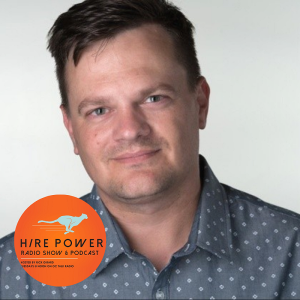
Thursday Sep 03, 2020
Your Local Hiring Market is Going to Disappear! Bradley Clark of RecTxt
Thursday Sep 03, 2020
Thursday Sep 03, 2020
Local hiring market is now gone! Guess what! Today, your best people will be hired outside your geographical location.
Our guest today: Bradley Clark, Co-Founder & Product Strategy of RecTxt
Bradley Clark, who is both a recruitment leader and an actual entrepreneur himself. He’s the Co-Founder of Rectxt, a text recruiting platform, and after a long consulting career working with organizations like Samsung R&D, Boeing Labs, Plenty of Fish, Best Buy, he’s now leading recruitment at Article.
Being on both the front line and talking to a number of companies and recruiters, with COVID and Work from anywhere - he’s seeing this rapidly emerging trend of where top local talent is getting scooped up from outside the market.
Today we are discussing:
- Why your local talent pool will continue to dry up
- How to counter this trend and give your company a competitive edge
Challenge today?
- Candidate experience is consumer behavior. People do have a lot of buying power right now. With remote, you are able to buy anywhere right now.
- Hiring local talent is now more competitive. Remote work will decimate your local hiring market. Already seeing it happen. Organizations say - work anywhere! Precedence to work anywhere led by tech giants.
Why is this important to the company?
- The best people in your local area, are going to be out of your market
- Transactional market/process will out bid you!
- Disrupt smaller markets
- Local discount is over
Rick’s Nuggets
- Work from home has opened the flood gates
Adjust your mindset and start adjusting your processes:
- Focus on growing your own talent
- Finding ways to build your own people
- Making them committed to you
- Rewards & recognition (your cool office, and office based perks are no longer valuable, mental health is important)
- Focus on Keeping them
- Engagement
- What the work looks like and the meaning of that work
- Flexibility & shift to output based
- Interview process as a promoter rather than a bouncer
- Mindshift change
- Rather than no… who do I say yes to?
- Speed & decisiveness
- Pre-interview process
- Understanding what the problem really is that they are trying to solve.
- What skills are needed to solve that problem
- Define what the person is really needed to do
- You need to be able to identify the “what and why”
- Interview process
- Focus on the “how & when”
- Selling the problem, how it is good for them
- Identify people that want to be a Big fish in a small pond
- Be decisive
- Communication
- Improve both the Speed of communication and keeping an open channel of communication. Get off email, this is why we created Rectxt.
Rick’s Nuggets
- Whats in it for me (not you) needs to be all you are con
Key Takeaways:
- Understand they’re no longer competing locally for top talent, so they’ll have to change to compete (business can’t be the same as always)
- Interview well with knowing what you want, then be decisive
- if/ when possible grow your own talent, then do everything you can to keep them
Guest Contact:
LinkedIn: Bradley Clark
Website: RecTxt
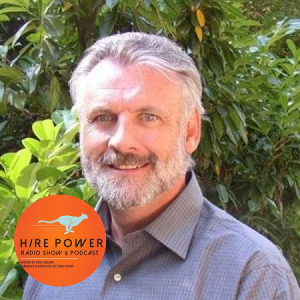
Friday Aug 28, 2020
Friday Aug 28, 2020
Why Hiring through the pandemic is a strong Indicator of a innovative business.
“We have all been forced to pivot and now we are weathering the storm” for most businesses.
Our guest today: Jay Connor, Founder & CEO of Learning Ovation
Recognized as an early thought leader in collective impact, Joseph A. “Jay” Connor, JD/MBA, is the Founder and Chief Executive of Learning Ovations, Inc. The mission animating Learning Ovations is to have all students reading at or above grade level by the end of third grade.
Jay, a C-suite officer for two separate Fortune 500 corporations, has extensive leadership experience in the business, nonprofit, and public policy arenas.
Today we are discussing:
- Why you should be hiring NOW
- How to evaluate for the business and skate to the puck
Challenge today?
- Is this company able to adapt and respond?
- Have a future, capacity to respond to change vs. being changed
- Higher quality people attracted to the company simply because they are hiring
- People are open to talking.
- Not hunkering down during pandemic is a sign that the company will thrive post covid
Why is this important to the company?
- Expanding & growing in the face of problems
- Approaches & ways of doing things are more attractive to potential businesses. New approaches are welcome and critical to moving forward in the business.
- Engagement at the strategic level is more accepted today. Requiring employees/people to expand their knowledge base.
- We are in the second wave now and you can't be on the sidelines anymore!
How do we do it?
- "Skating to where the puck is going to be." - Wayne Gretzky
- Force yourself to ask “what is the opportunity”
- What allows me to be active vs passive?
- What windows are opening up when the doors are closed?
- What do we need to do to skate to that puck?
- Something need to change about what your delivering (product)
- Or way to change about positioning, branding, communication
- What to change about your team?
- Evaluate every person.
- Where will people have to be 6 months from now.
- Top down assessment
- Gives the opportunity to expand & refine
- Decide to grow the workforce with their PPP
- Highest risk position is the status quo!
- Ability to minimize the risk by acting
- Business as usual is NOT viable!
- Start hiring for new competencies (what are we missing?) and values & mission focus!
Rick’s Nuggets
- Now is the opportunity to double down and be able to attract strong talent
- People are open to talking because of the uncertainty
Key Takeaways:
- Never too late to pivot. What is the most likely scenario for my business a year from now. Assume that there is not going to be a quick fix. Position for the worst case scenario!
- Do an honest appraisal of the team… Including yourself! Will the people you have be good for the business a year from now. Change is tough
Guest Contact:
Website: Learning Ovation
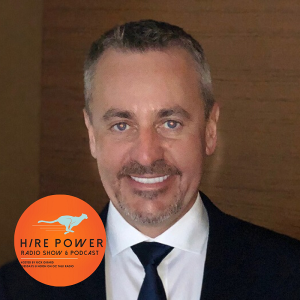
Friday Aug 21, 2020
Friday Aug 21, 2020
Thank you for having me back, but you know the unwritten rule of being on a show three times?
What's the unwritten rule?
The unwritten rule being on the show three times is I get to ask you questions today. So I'm taking the laptop.
So Kelly is hijacking the episode. Is that we're doing?
I am. I'm hijacking it because I want to be host today. And I want to ask you questions. I want to find out your thoughts on what we can ask or how we can help hiring managers get better?
This sprung off the ever and Dean scenario where you're pro job board and I'm not pro job board.
Obviously, I'm pro job board because I've built a business that distributed 40 million jobs a year to different job boards around the world, that was Broadbean. And now what we do is we help companies with their strategy and their tactics to get the most value from every cent they spend on-
So you're hijacking my show?
I'm hijacking your show. And I want to ask you some questions. We often talk about the benefits of job boards versus not job boards. And I know your historically a search business. So why are you more inclined to look for a candidate or to go and find somebody proactively than spend money on an ad?
It depends on the scenario. So I'm biased due to the fact that my searches that we do at my firm tend to be executive hires. And it's a very small targeted amount of people that we're going after. So we target, I've found that the sniper approach works much better than the shotgun approach. Even when I was doing contingency search at the engineering level, I've just been far more effective and made better hires when I've gone out and I've found the person and brought them to the table than when I've farmed somebody off the job board and brought them through the process.
And have you ever used job boards? Have you ever spent money on them?
Okay. Yeah, I have. It's been a long time. I have not probably in the past 10 years, but back when I was doing contingency search, that's when we had all the job boards. Essentially, we'd get a job. We'd pull off anybody from any sources we can get them to. And it's just a race to get those out to the company before they either find it on their own or somebody else gets it over to them. And that's the business. That's what it came out.
In your opinion, you search something that's really only for C level executives or can you use it for any position nowadays?
No, you can use it for any position. Search is not necessarily scalable when you have 500 roles that are available for any given time. Then it becomes a question of whether or not you have a really strong interview process. No matter what you're hiring for, you should have a really strong interview process. That way, you're bringing people in that essentially fit your culture. They fit into your values, in your organizational structure, and they can provide impact to your company. It doesn't matter where you find them.
We both agree that there's four ways to fill a job. Where you run some form of search, whether that's electronic or manual, you can use a job board or some sort of advert. You can hire an agency and pay them a fee, 15%, 20%, 25% percent. Or you can use a referral. Now, there are nuances within those, but there are about your four kind of headline ways that you find people for your company. And one of the things that most line managers don't get much advice on is asking for referrals. What would you suggest that hiring managers do in terms of maximizing their referrals for jobs?
The way in which you ask for referrals is more important than asking referrals. Let me explain. When you reach out to your employees or the people that work for you or people in your network who is good at a particular role or skill set or something to that effect, you can't let them present it. You have to be the one who's contacting that person. I've found that when you put it out to somebody, "Hey Kelly, you know so and so over there, can you reach out to them? Let them know we have this role that we're looking to fill." You're going to call them up and you go, "Hey, are you looking for a job right now? Because I got a friend's company or my company is looking for some people, would like to talk to you about it."
Well, somebody is engaged in their current work. They're not going to be looking for a job. I'm not even going to get past that screen. It's going to say, "No, not looking." The worst thing you can do is have your employee reach out to that person and ask them if they're looking for a job. Now, if they make an introduction and you can set up a time to talk to them, then you can get past that screen. You can get to a point where you can talk about what's happening in their current role and see if there's any problems that you can solve for that person in their career, that you might be able to enhance or make better for them at your company.
I want to ask you a couple of questions, but since I'm hijacking this show, let's just take a moment. This is Kelly Robinson of Hire Power radio. Just a quick 60 seconds from our sponsors. Sorry about taking over your show here, but I'm having fun here.
No, I like how you just turned the tide on me.
Just enjoying as we go. Okay. You've been in this business for a long time. Tell me, what is the worst opening line you've heard?
You looking for a job?
Come on. You must have heard worse than that.
No.
Normally, I hear, "I have a job..."
Yes. "... That I think you'll be perfect for. I found you on LinkedIn and I want to talk to you about it." It's riddled with me, me, me, me, me, I, I, I. The worst openers or anything that they hear a hundred times from everybody else throughout the day. I hear a lot through recruiting groups and pages where people come up with the same version of the, "Hey, I have this. I'm interested in talking to you." Me, me, me, me, me, as opposed to, "What about you?" Everything is a variation of that really bad opener. And you're putting people in a mindset where they're automatically tuning you out. It's automatically negative because you don't give a shit about that person. You just care about filling your job. That's what is perceived.
I agree. I think recruiters historically are overworked and undertrained. And they forget the core principle of what we work to. Our job, I think, is to explain to people why they should quit their job and work for our client. And there needs to be a reason why they're working for our client. And it's not because you have a job.
But take it even a step further. You have to find out first if somebody has a pain point. You have to understand the person. I say it all the time. You need to have conversations with people. And you almost need to play the role of a bartender or a therapist in the very beginning to understand what the motivations of that person are. Now, if somebody's completely satisfied in their role and they love their company, don't try and recruit them. It's going to be a waste of your time and their time. Don't try and get them to come talk to you, but you can build a relationship. There's going to be a time when they're going to hit their end of their juncture at that company, where they're going to be open to hearing about something that's going to help them enhance their career. And you want to be the first person they think of when that happens.
Absolutely.
You don't want to put yourself in a position where you're pitching a job and it's just another version of the same thing that they've heard 50 times prior.
Let's pick the top three worst openers you're seeing.
I can almost say this verbatim. And I've had conversations with people that I've talked to. They're like, "Thank you so much for not pitching your job." It's always, "Hey, I found you on LinkedIn. I think you're perfect for this job that I have at my company. And I'd like to talk to you about this opportunity."
Perfect. So whoever's listening, take notes, write that down, and start using that rather than saying-
No, don't use it. I said don't ever use it. Well, or use it. You just made my job easier. I'm happy that everybody uses the same version of that. Don't pitch your job, don't pitch your company, and don't pitch yourself.
See, I heard you say pitch opportunity. And I'm a big believer that you should pitch opportunity to type.
You have to pitch the opportunity, but you need to know where that opportunity lies for that individual. Everybody's different. You can kind of guess for most people that are working in a role, the main complaints tend to be growth. So they're kind of stuck. They can't go any further. Somebody needs to die above them in order for them to move up. Their leadership might have made a change. If you have any of this knowledge of, "Hey, CEO just left this company and they're taking it in a whole new direction," you can guess that there's probably some people over there that aren't really super happy with their leadership. You can craft your message in and around those pain points, so to speak. And then the last one is the content of the work. People get bored with what they're doing. They're not learning anymore. If you can get them to engage with you based on those three criteria, that's a good starting point. But ultimately, I wanted to get you to talk to me about what's happening with you. Then I know how to position my opportunity for you specifically.
So what I'm hearing from that is trying to avoid what everybody else is currently doing, which is a LinkedIn message that starts with, "I have a job." Focus on the opportunity, answer the question why somebody should quit their job and work for that organization. But actually, what is the growth opportunity when you get there? So not just, "Here is a position," or "Here is an opportunity to do X, but X can lead to this role."
Yeah. You're connecting the dots for people. Okay. They may not even be aware of the fact that they're stuck too. So you're giving them a path to go down. You're not giving anybody a path to go down when you say, "Hey, I found you on LinkedIn. I have a job you're perfect for. I'd like to talk to you about it." And then you start going into inquisition mode where you start really asking questions where you're asking screening questions. Again, I don't think there's anything that turns a person off more than, "Wait, you called me." You start throwing up your own hurdles so that people start pushing you away. And then they're looking for a way to get out of the conversation with you.
Yeah, I think that is such a valuable point there. And it also goes to my belief that when you write a job ad, we've had this debate many times, I think job advertising is a really pure form of digital recruitment, but you have to write a job advert and not share a job description. And I think it's exactly the same as what you're talking about is your explaining to people the opportunity, the benefits of working for that business, not just sending out the HR job spec that's been in the system for 10 years. And so if people were to take more time right in their adverts, they'd probably get more relevant response, less of it, but more relevant. And it's exactly the same as what you're suggesting when you present to somebody.
Last time we did an episode, a few episodes back, you said, what if you just flip everything upside down, start at the top and then work your way down? Do that with your job description. So your job descriptions, you should completely flip upside down. The normal requirements and all these sections that you have in there, a lot of them are in there for compliance reasons and so you don't get sued. But they're 100% not attractive to really anybody, which is why you get so many people that just go, "Oh, that, okay. I like that title." Click. "I'll just submit my resume." When you actually create a document that's a marketing related document. You're going to get much, much, much better results and higher quality people.
So therein lies another coaching point for people listening to this is understand the job description. Ask the questions. What are the opportunity? Where can this person step up? Where can they grow in this role? Questions that just generally don't get asked. We receive a job description, we get one from a line manager, we just take it as read, we don't question it. Ask questions like, "Well, the last person that's in this job, where did they go? What did they do? Did they get promoted? Did they leave? Why did they leave?" Understanding a little bit more so you could match the opportunity to the company to the person.
Well, the other thing, too, is that job descriptions don't ever give you an idea of "How will I know I'm going to be successful in this role in three, six, nine, 12 months?" Building performance metrics into the job description for a minimum of three months is ultra critical. Because then you have accountability tool. You agreed you're going to do this, this, and this. And if somebody is not performing what they sign on to to perform, then it becomes a very easy transition out or a very easy reason to keep them. And there's not a lot of thought that's put into that at all. At all.
I want to round up me hijacking your show today with one question, because I find this funny, because you've told me about this before. So I'm going to put you on the spot run. Explain to everybody your little car technique.
Oh gosh.
Unknown secrets are coming out now, folks.
As a point of reference, and by the way, I didn't make this up. I think I got this from some training or a mentor that I had years ago. But when you hire people and you want people who are pretty organized, or run a tight ship, you do this little trick. There's lots of little techniques that you go out to lunch with people. So we had always set it up when you come back for your final interview, "Let's go out to lunch." I might say, "Hey, you know what? Would you mind driving?" And so I have the person drive. Well, I'm going to get a really good view of if everything meshes up on what they told me in the interview, based on their automobile. If I'm looking at somebody who is an organized sales person, who's claiming to be super tight and everything else, I can look at their car.
And now, if their car is clean in immaculate, maybe it has a couple of things, they're going to run their desk the way they run their car. A clean car means you're going to have a tidy desk, and that person, I've walked into offices and I've looked at desks and I go, "This is the most productive person in here." And they go, "You're right." Just by looking at their desk. The ones who have all stacks all over the place, there are anomalies if they're super productive. But usually, if you're organized, you're going to be more productive than other people.
It's quite funny you should say that because my car is immaculate inside and my friends will often make comments about I'm obsessed with keeping my car spotlessly clean. But also my desk has got a set of rules and on my desk, if it's not a right angle, it's absolutely a wrong angle. So everything needs to be at right angles. Everything is [inaudible 00:13:01] same as my car. So I don't know where that puts me on the spectrum, but it will work for me. Thank you for letting me hijack your show. I'm going to give you back your laptop, sir.
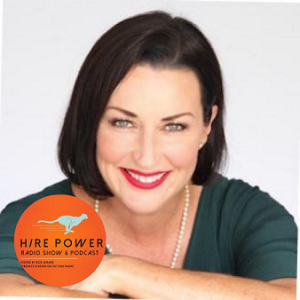
Thursday Aug 20, 2020
Thursday Aug 20, 2020
What's your story?
"Well, we are funded by Greylock and we are disrupting a $30 Billion dollar industry. What else do you need to know?"
This is good information to know but it is not your story. I quickly became a very bored audience with this CEO. Ultimately your story is what draws people in and invites us to work with you. When communicating with the people you are needing to hire it is critical that your story inspire them to join.
Our guest today: Stepahanie Paul, Founder & Head of Training & Development of The Executive Storyteller Academy
Stephanie takes great pride in coaching developing executives, sales teams, TEDx speakers, Women in leadership and experts of all kinds, to become master communicators.
In fact, her proven approach, "Powerful Emotional Engaging Presentations," draws upon her years of rich and diverse entertainment experience as well as she is a certified trainer using 5 science based assessments for behavior and communication using Psychology and Neuroscience.
Today we are discussing:
- Why communicating your story is so critical from your hiring process through tenure
- A 3 step method maximizing your communication
Communicating effectively during an interview is riddled with assumptions, bias and shallow content. Rarely is communication deliberate and with purpose.
Challenge companies face today?
- Developing a person to be in more of and executive leadership role
- Understanding your True Values because your values whether you know them or not depict your behavior and your audience define you by your behavior and actions not by what you say.
- Many are so busy “doing the task” they have no concept of how you show up in the process of the task! Understanding your Stimulus Value
- Checking your behavior before you engage what do you want the audience to do, achieve, react in a certain way?
- No one wants to tell you how you show up because everyone just wants to keep the boss happy being open to feedback is the key to a growth mindset
- Developing lifelong learners for value added leadership that build engagement within themselves and their teams rather than dictators who only drive the bottom line and don’t see the wealth in their people.
- Great leadership is looking at the possibilities not the limitations and not focusing on your “Power” instead using your energy to empower others to ignite the leadership within themselves.
- The way you deliver is more important than what you say
- Come up with a great question to ask yourself on everything - Mine is “How do I make this more fun and engaging for the audience so they will remember?”
- Being hyper aware of how you show up and listening and reading your audience effectively
- Audience will always tell you what they need
- Energy you chose to bring to the table is super important!
Why is this important to the company?
- Immediate benefits to the team and individuals include better fits for task assignments and fewer, easier resolved conflicts. You will find these communication tools and understanding this type of developed skill set will also help you grow in your work and as a member of your field as well. The concepts we are talking about here can help you get a better understanding of yourself and your clients’ communication styles and motivations, which will help you more effectively respond to their needs. And because these are cutting edge concepts in the market space, will give you the opportunity to continue to grow as leaders in your industry.
How do we do it?
- Y: In the first component we use a series of assessments to build understanding around stimulus value and the areas of strength and opportunities for growth in the recipient. We then teach successful behavior, memorization and delivery techniques for connecting with an audience
- O: The overall objective is to teach the recipient effective ways (established in science) to build storytelling, supportive images, stimulating slide decks, and content that is dynamic and influential.
- U: The last component of “The Y.O.U Method” and the most important is the audience. We work with the recipient of the training to guide them through effective techniques to read and work with an audience so they develop deep engaging presentations based in our biology and how that works.
Rick’s Nuggets
- Yourself: must be your corporate values
- The person you are hiring is your audience
Key Takeaways:
- Always check in with where you are at, how you show up is a choice not a reaction to what just happened to you. Make sure that before you start communicating with your audience of 1 or 1001 you are emotionally and energetically where you need to be to achieve the results you want to achieve.. Self leadership is just as important as leading others.
- Learn to read the behavior or your audience, know how to check in and deeply listen to what they are communicating, research, prepare and listen to their needs and be value added.
- Make sure that your content supports your message (result) with powerful emotional images, stories and delivery. Make sure your accessories support you and make you shine rather than become a distraction.
Stephanie's resources:
I would love for you to become a founding member of our newly formed Facebook Group Executive Storytellers and follow us on Instagram @executivestorytellers
Instagram: https://vimeo.com/444640964
Facebook Group: https://vimeo.com/445080878
Here is a discount code to Stephanie's e-book that was released in February “The Why Guide To Story Hacking” use the Code: HACK4U
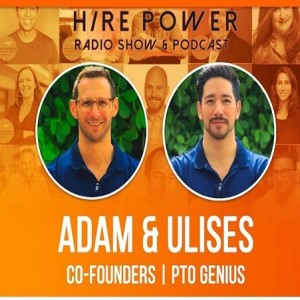
Thursday Aug 13, 2020
Unlimited PTO… The Pretend Time Off with Addam Gordon & Ulises Orozco of PTO Genius
Thursday Aug 13, 2020
Thursday Aug 13, 2020
But we have unlimited time off! Why would anyone not want to join a company with such a progressive time off schedule? Asked founder Sanjeev.
Two reasons, One PTO is a perk not a reason for joining a company. People will join and stay at your company when they believe in your vision and experience professional growth.
And Two, your company is a start up. No one is going to believe that with the aggressive production cycles that they can just take off and take advantage of this policy.
Our guest today: Adam Gordon & Ulises Orozco, Co-Founders of PTO Genius
With over 30 years of HR tech experience and a focus on employee benefits and leave management.
Adam & Ulises are serial entrepreneurs who founded PTO Genius to help companies increase job satisfaction, attract/retain top talent and lower payroll liability by re-imagining what employees can do with paid time off.
Today we discuss:
- The pros & cons of Paid time off structures
- How to implement the right structure for your unique company
Challenge today with Paid Time Off?
Potential liability for the company because it creates an environment where not self managed, managed like a traditional policy. Too dependent on the individual manager approval.
- Using unlimited as a marketing tool. But there really is no unlimited
- Creates more legal liability
- People either don't take time off or too much time off
- The bedrock to unlimited PTO is good culture. The bedrock of trust which can NOT be managed by managers.
Why is this important to the company?
- Culture
- Trust
- Mutual respect
- Accountability
- Unlimited PTO looks desirable to avoid the liability of the employment contract
- Avoid the management
- Payout at the end of employment
Rick’s Nuggets
- PTO is not a reason why people join your organization
- How PTO is managed/supported is a snapshot of your leadership style (which is the root of why people stay or leave your company)
- Benefits & perks are icing not the cake.
How do we do implement the right PTO policy?
Questions to Ask First: Can we trust our employees? Do I want to give managers the authority to manage when people are away?
- Starts with leadership and how you value the employee
- Communication- transparency
- Being Vulnerable as leaders
Start with the right culture. Most startups should start with a traditional PTO model
- Better to keep yourself out of a legal liability.
- Can't eat the cost of litigation
- Employees with unlimited PTO end up taking fewer vacation days than their limited PTO counterparts (13 days versus 15 days). SHRM source link HERE
If you want to implement an unlimited PTO policy
- Ask yourself if you are really built for it?
- Don't call it a “unlimited” policy but a “Self Directed” PTO
- Document the policy
- Define non starters- set up bumpers
- Manage that everyone has access to time off
- Encourage time off
- Creative time off incentives
- Assignment & tracking should be no disruption to workflow
- Set up a calendar where people know when people are off
- Hand off before someone goes away
Rick’s Nuggets
- Look at your company values and align your PTO policy with that which aligns with your leadership style
Key Takeaways:
- Unlimited policy- do you meet the above criteria. Is it truly self directed?
- Proactive hand offs
Guest Contacts:
Website: PTO Genius
Email: hello@ptogenius.com
LinkedIn: Adam Gordon or Ulises Orozco
Twitter: Adam Gordon or Ulises Orozco
